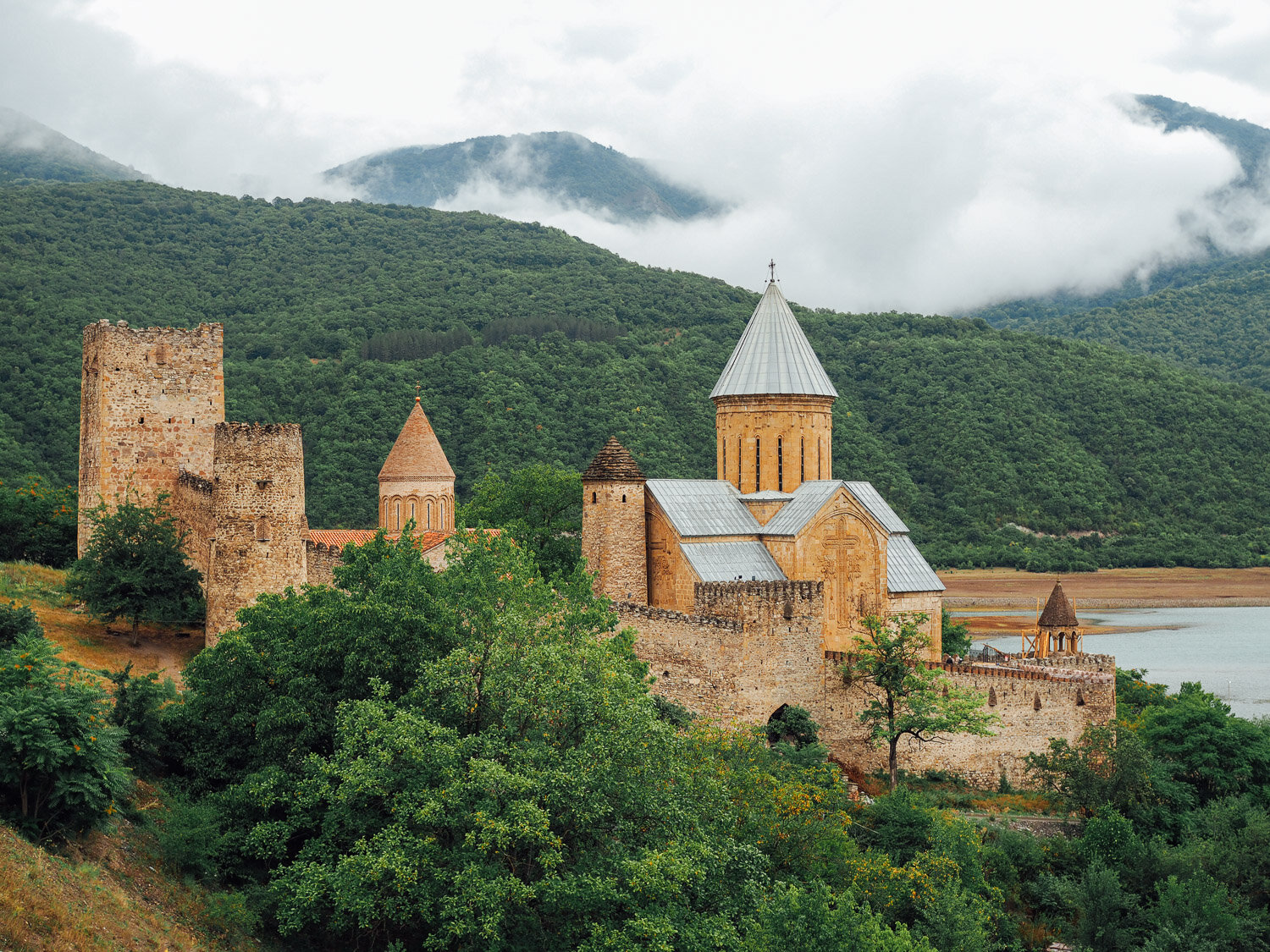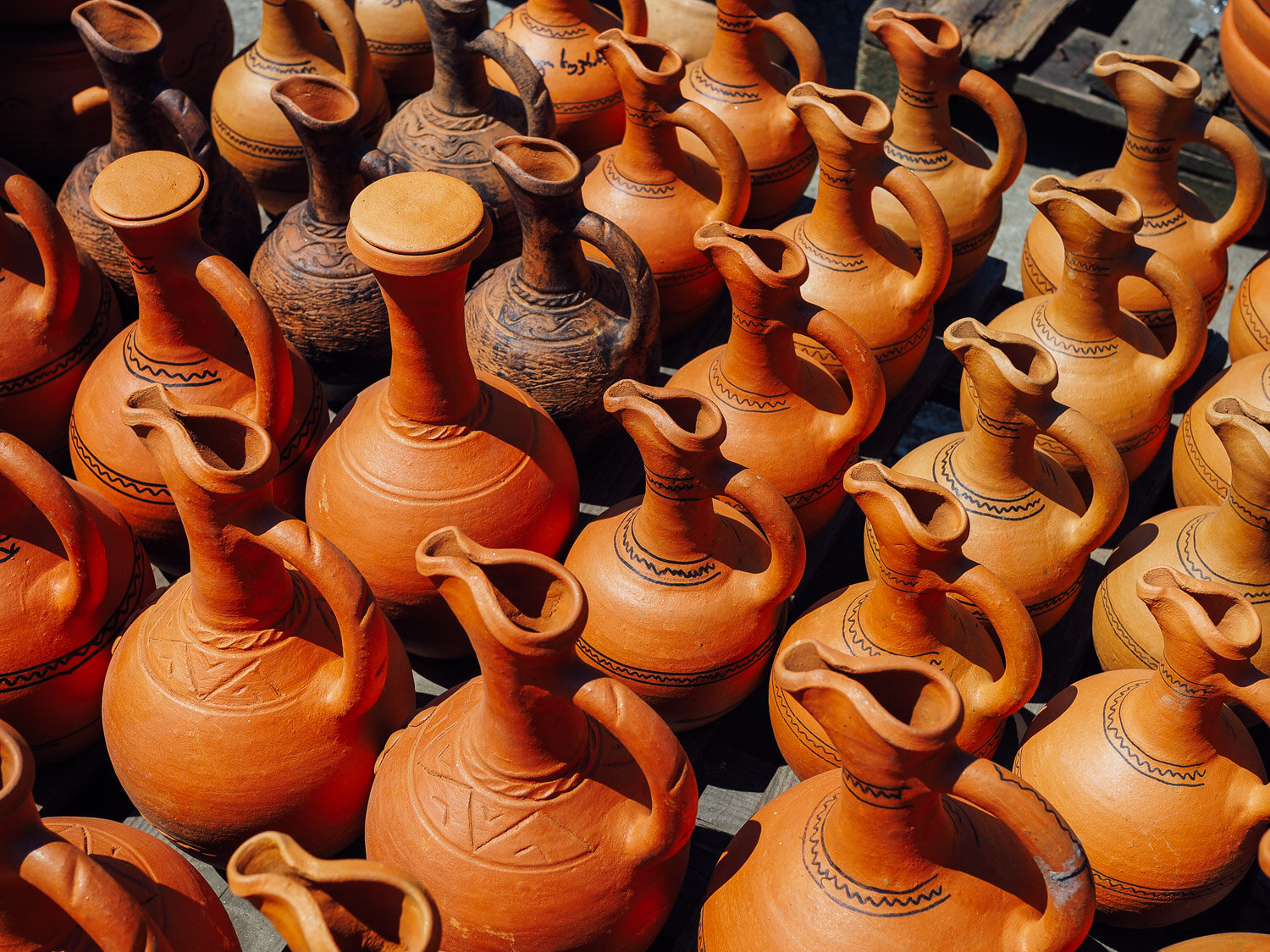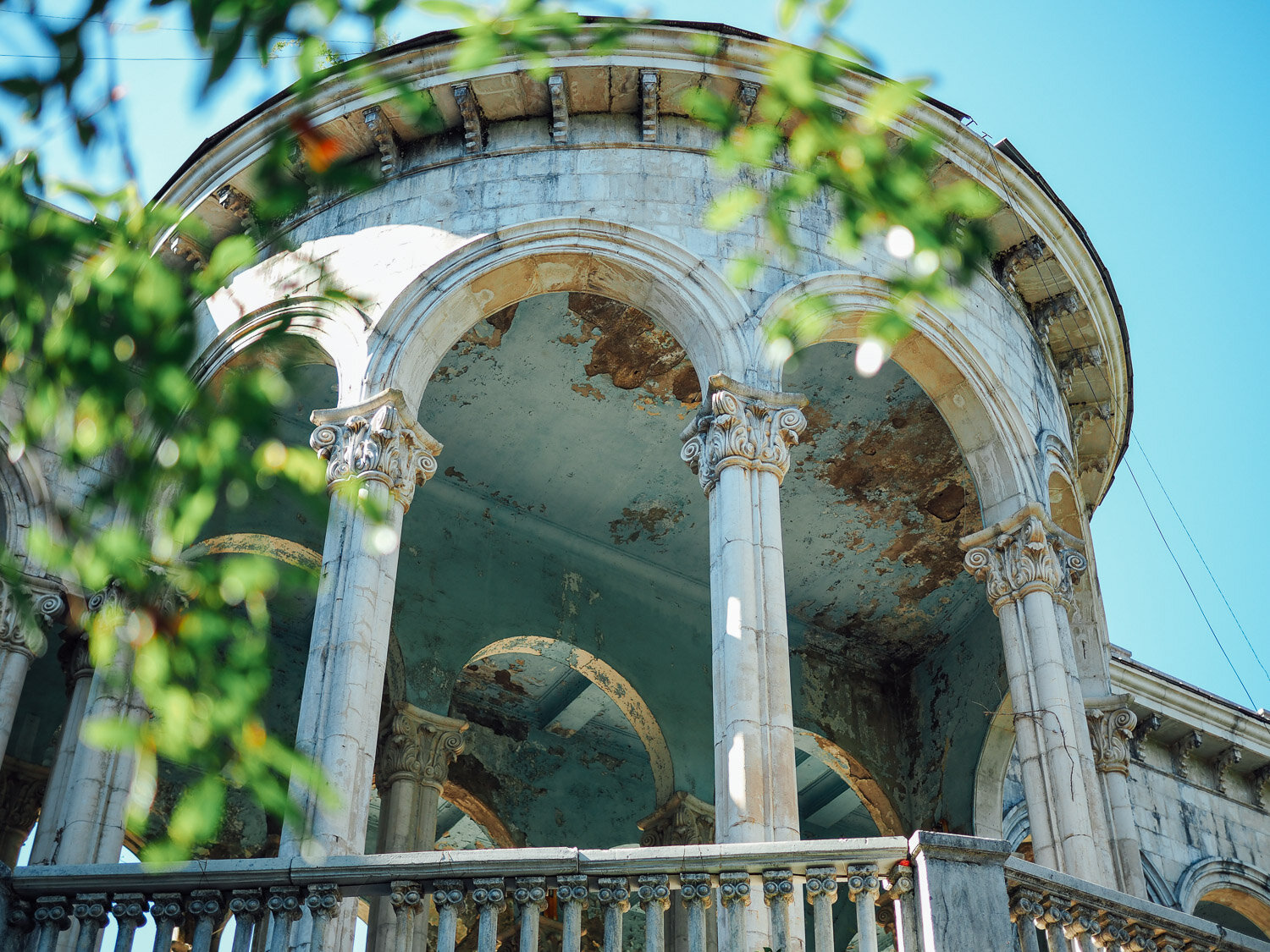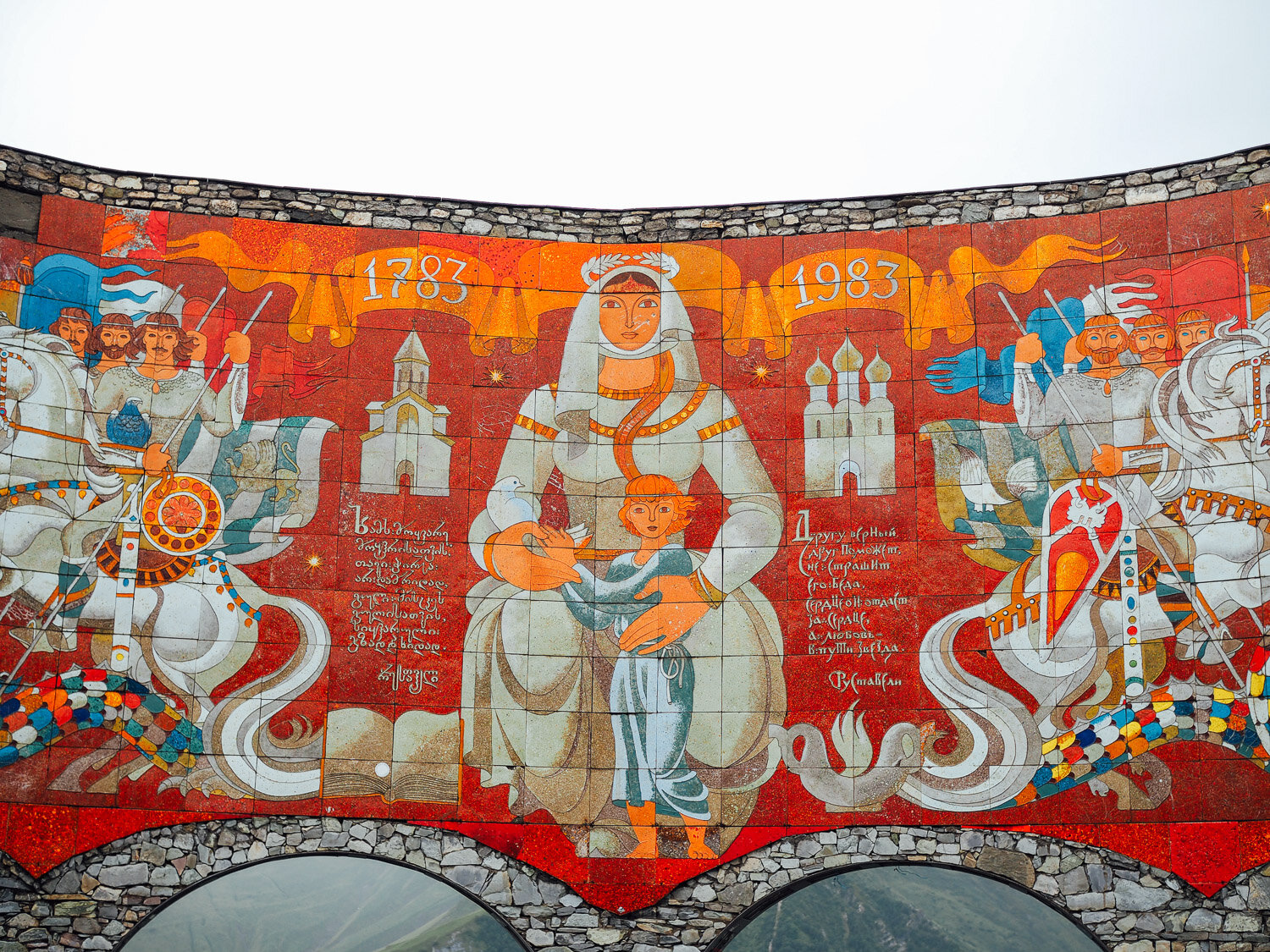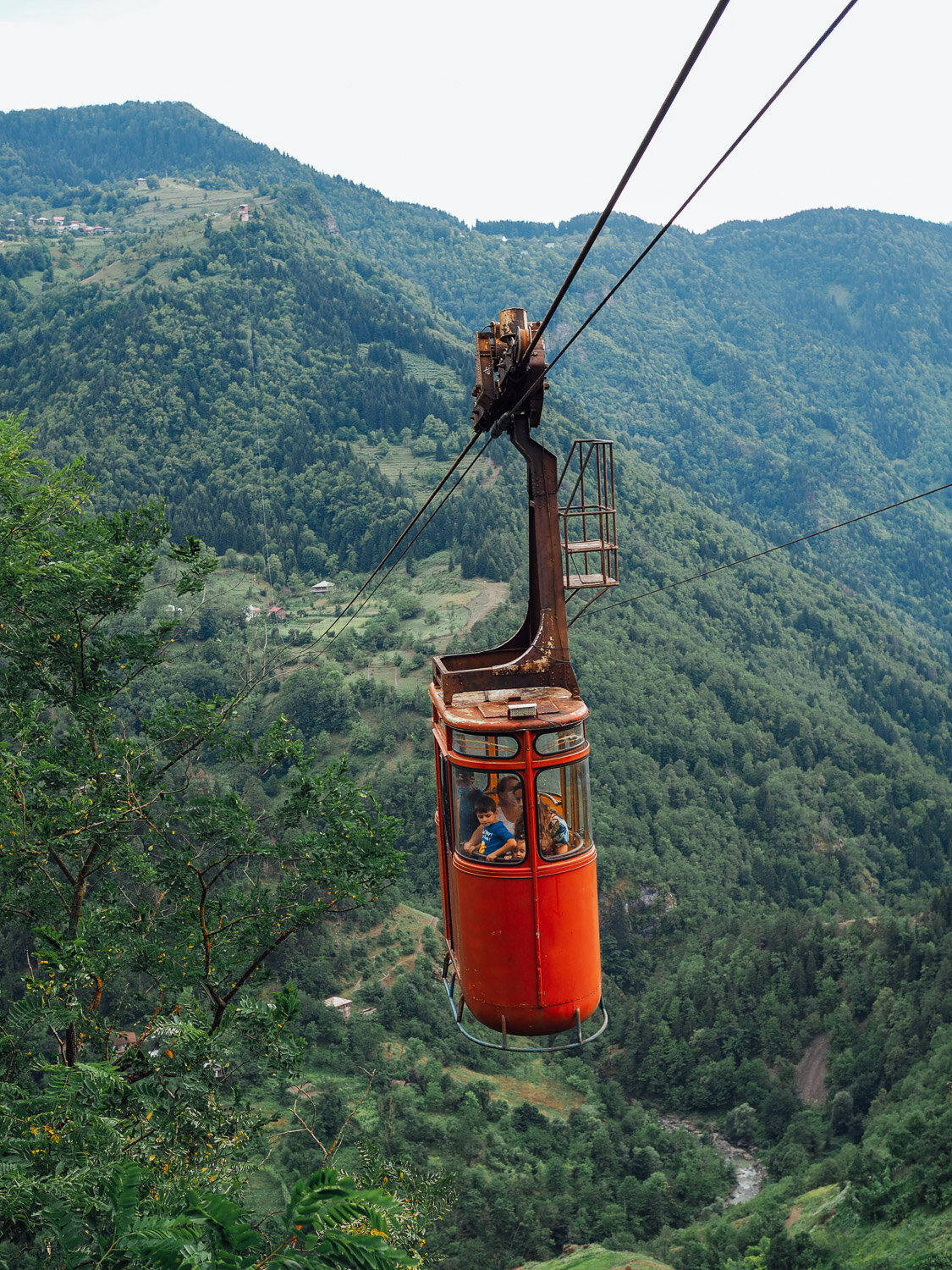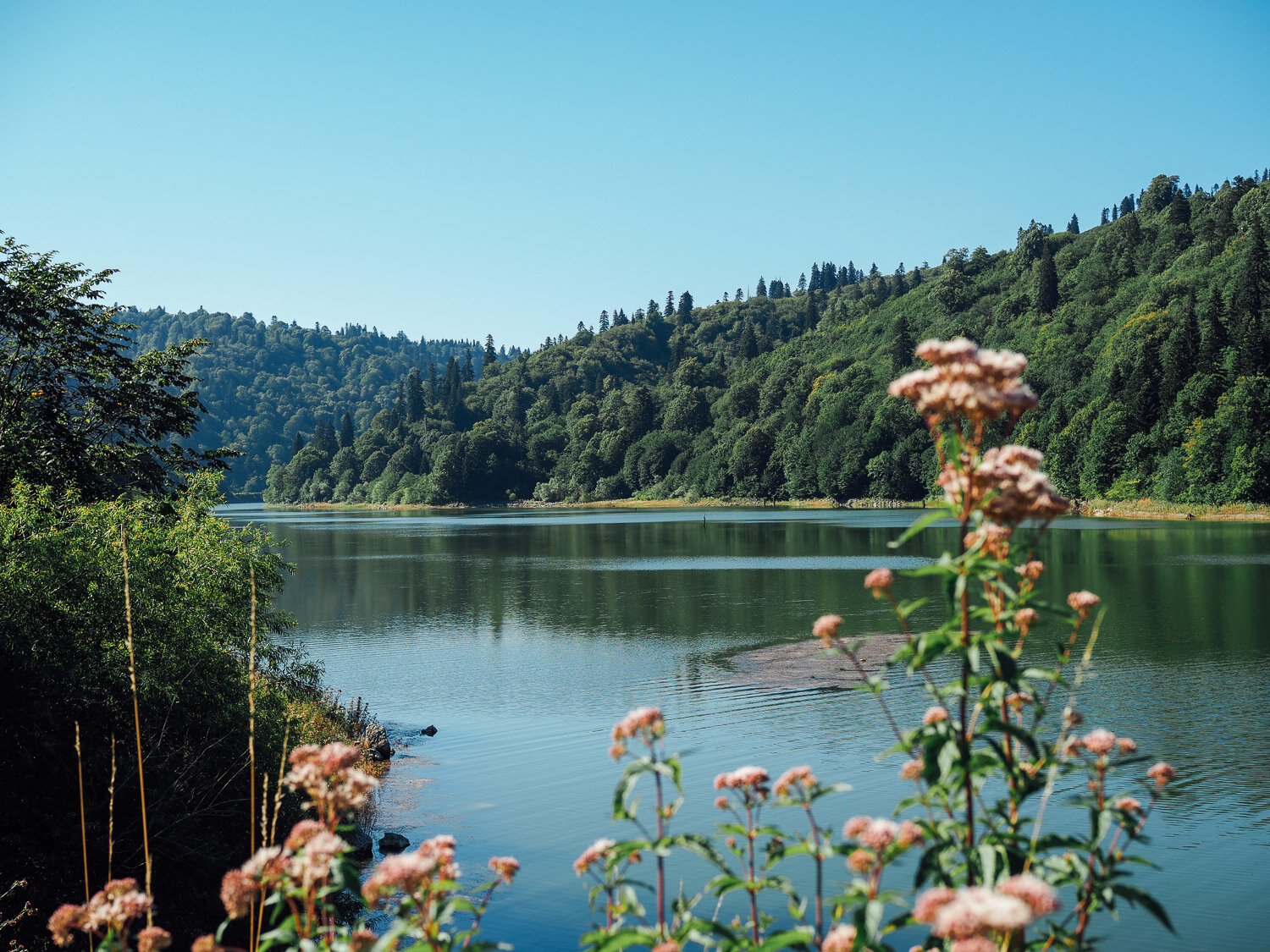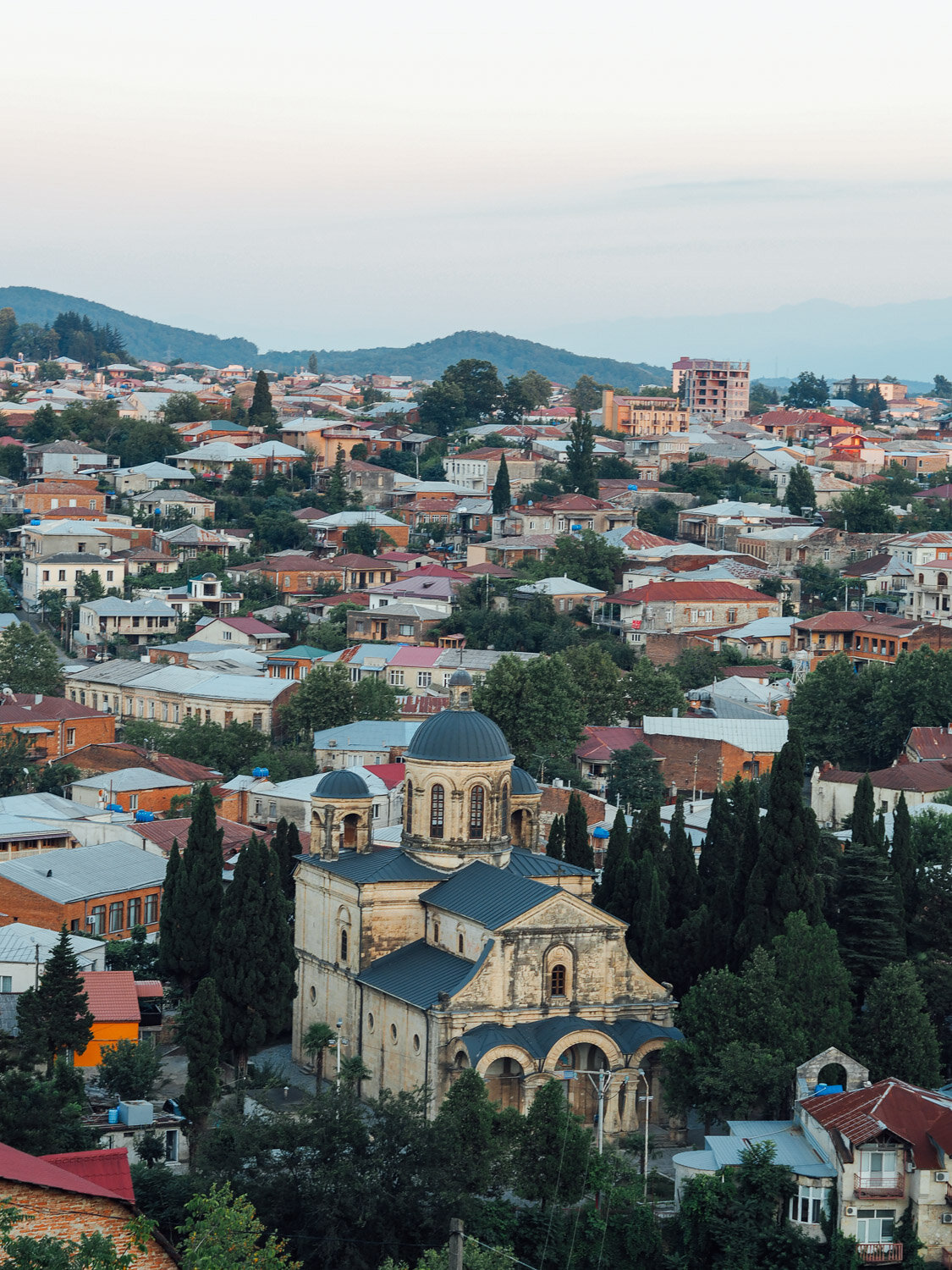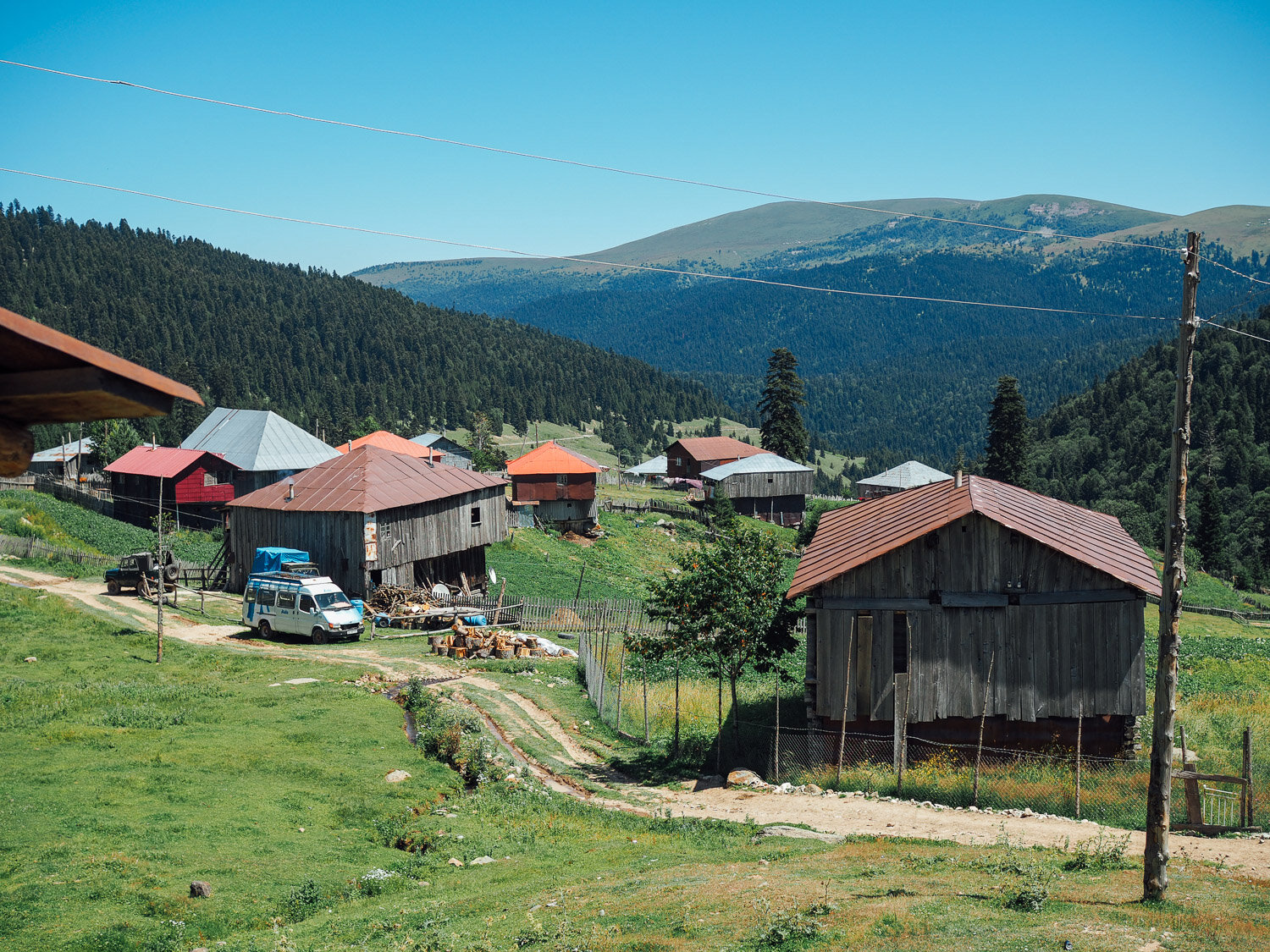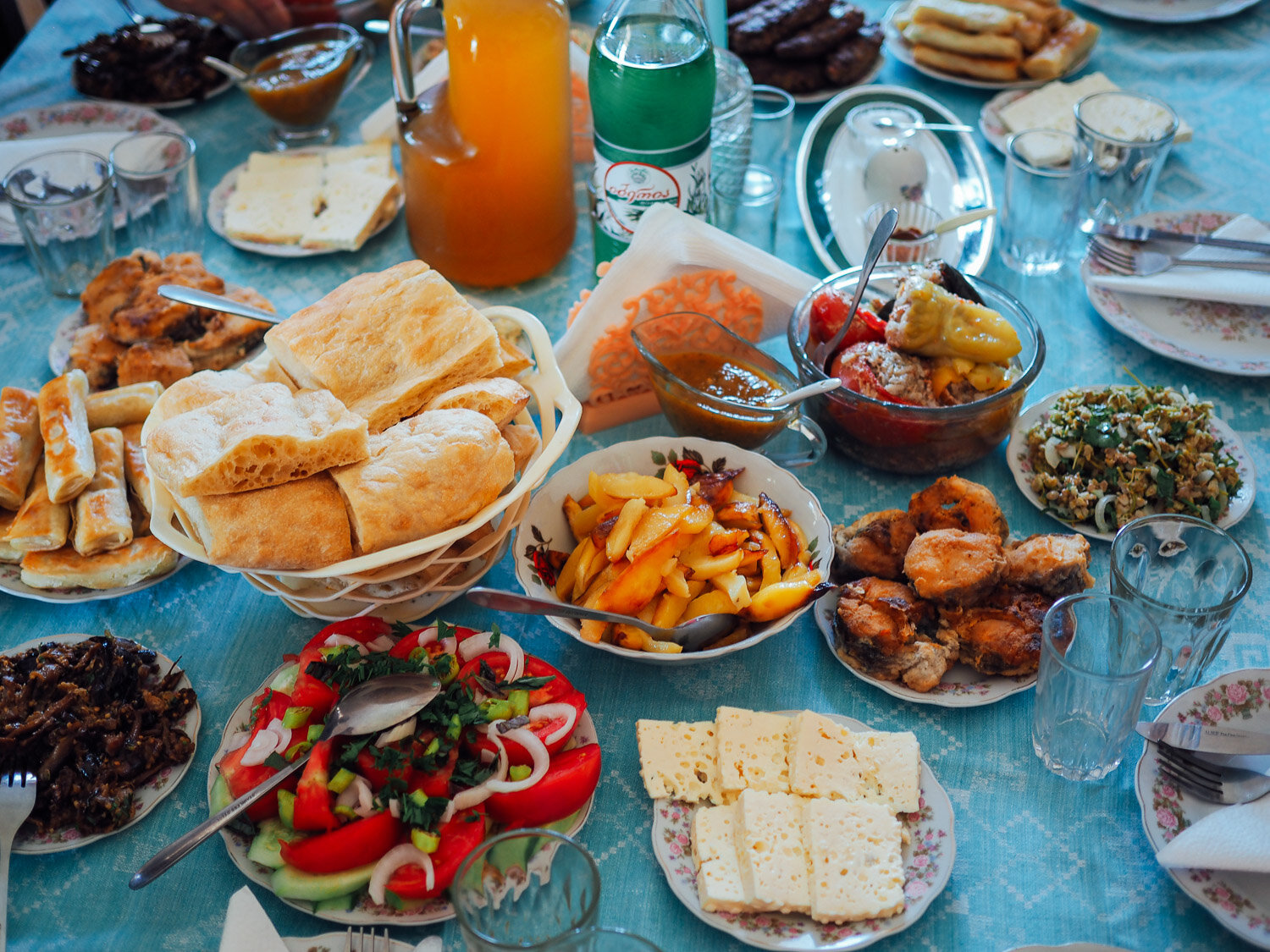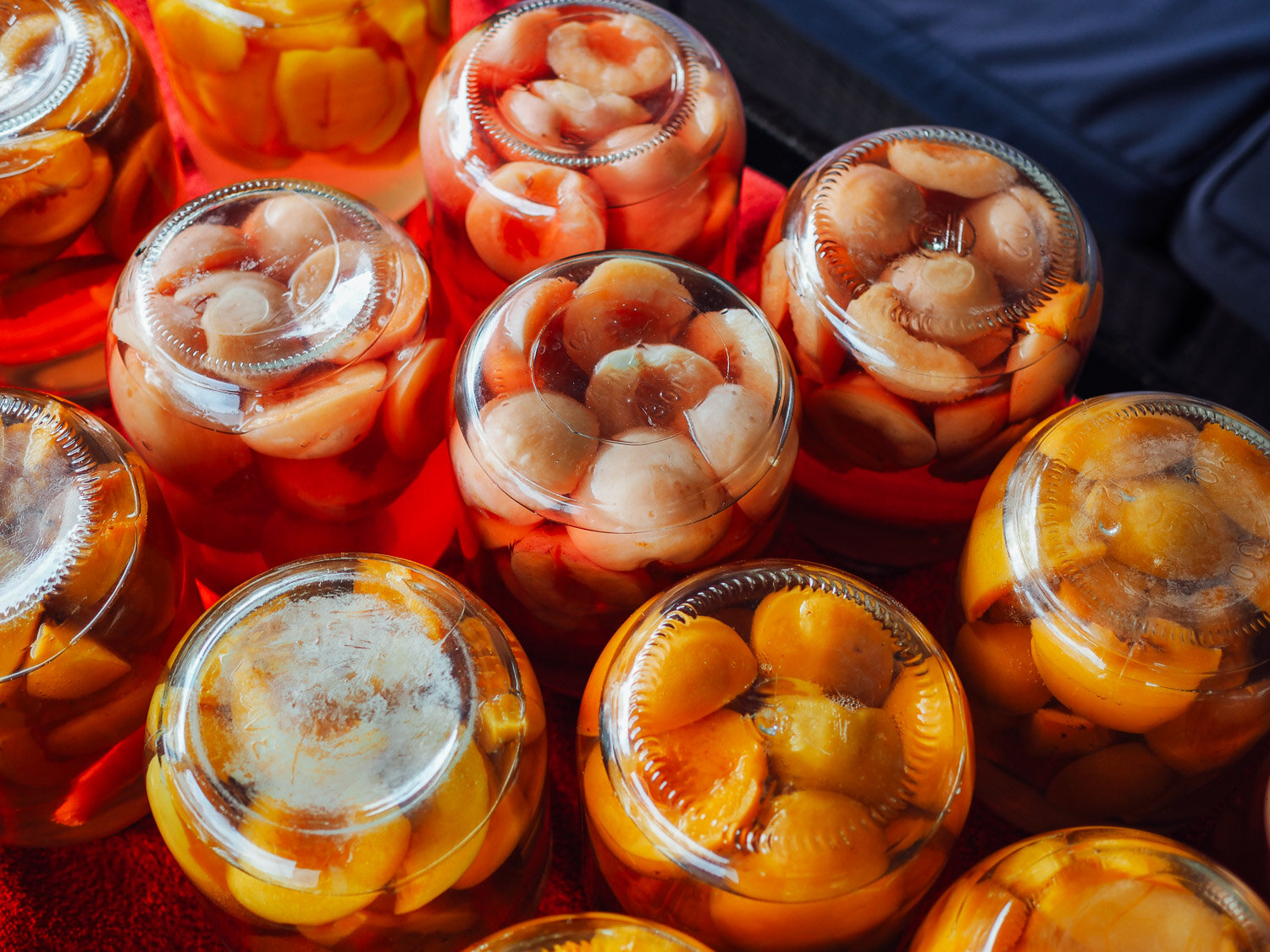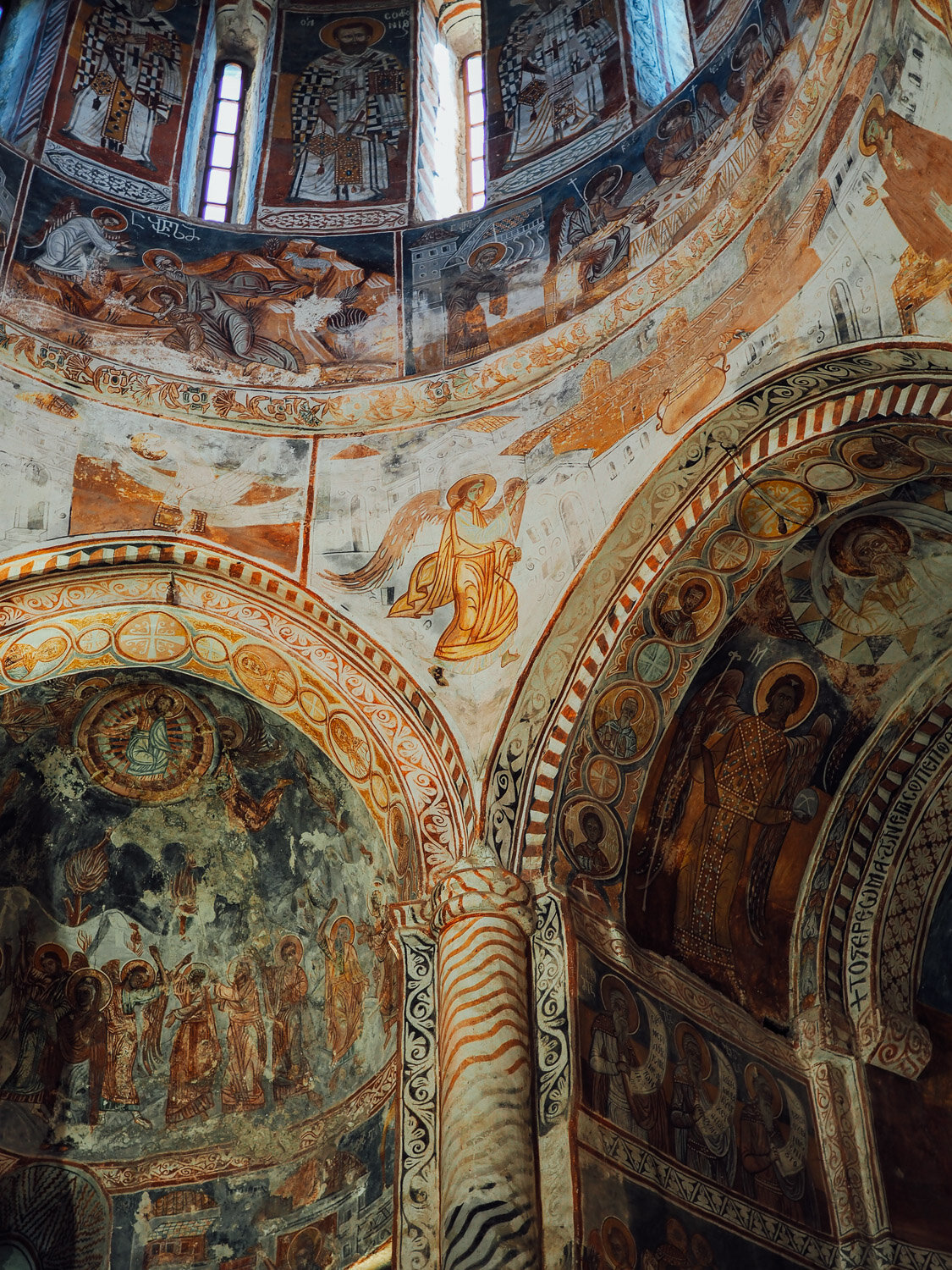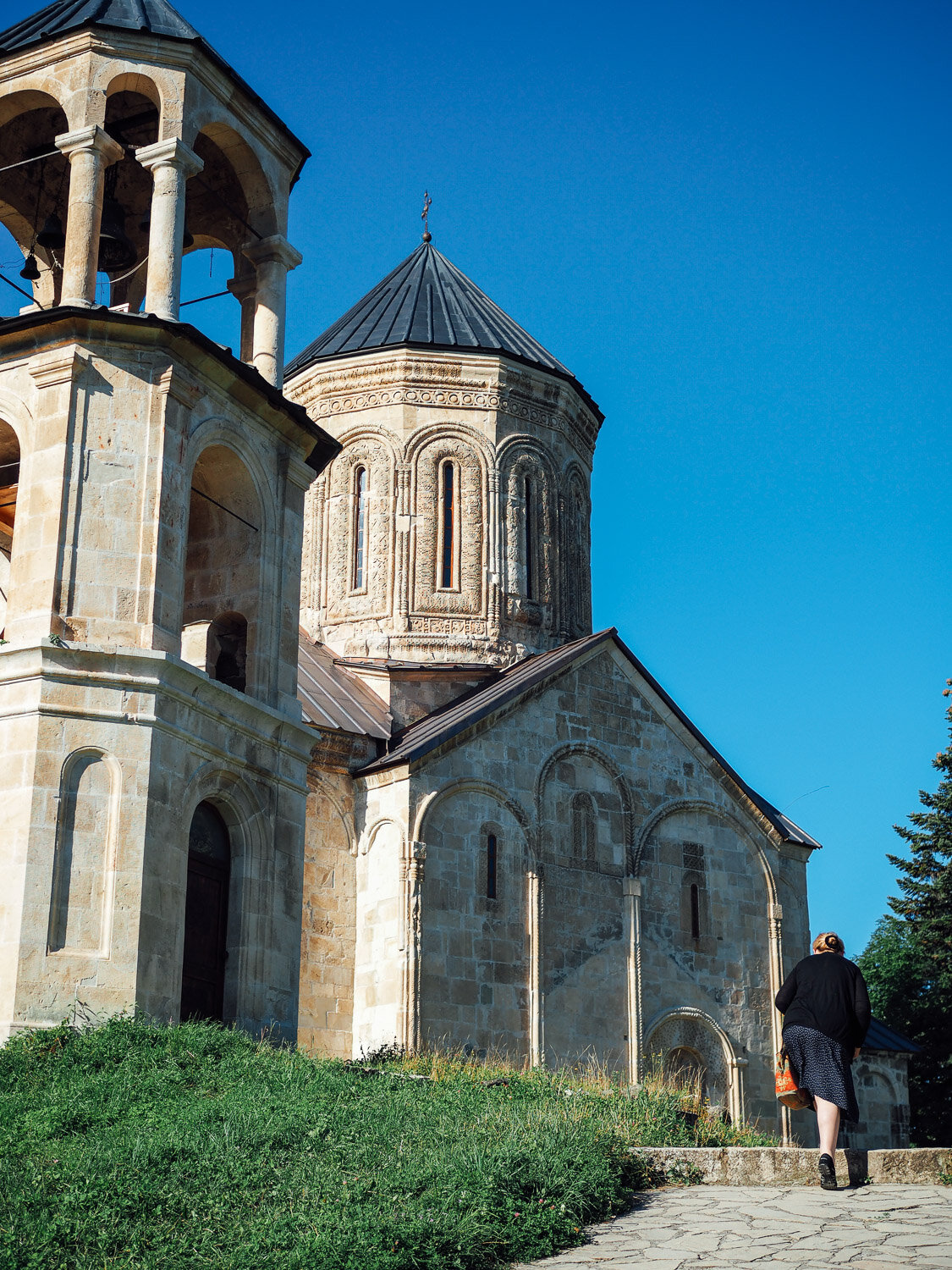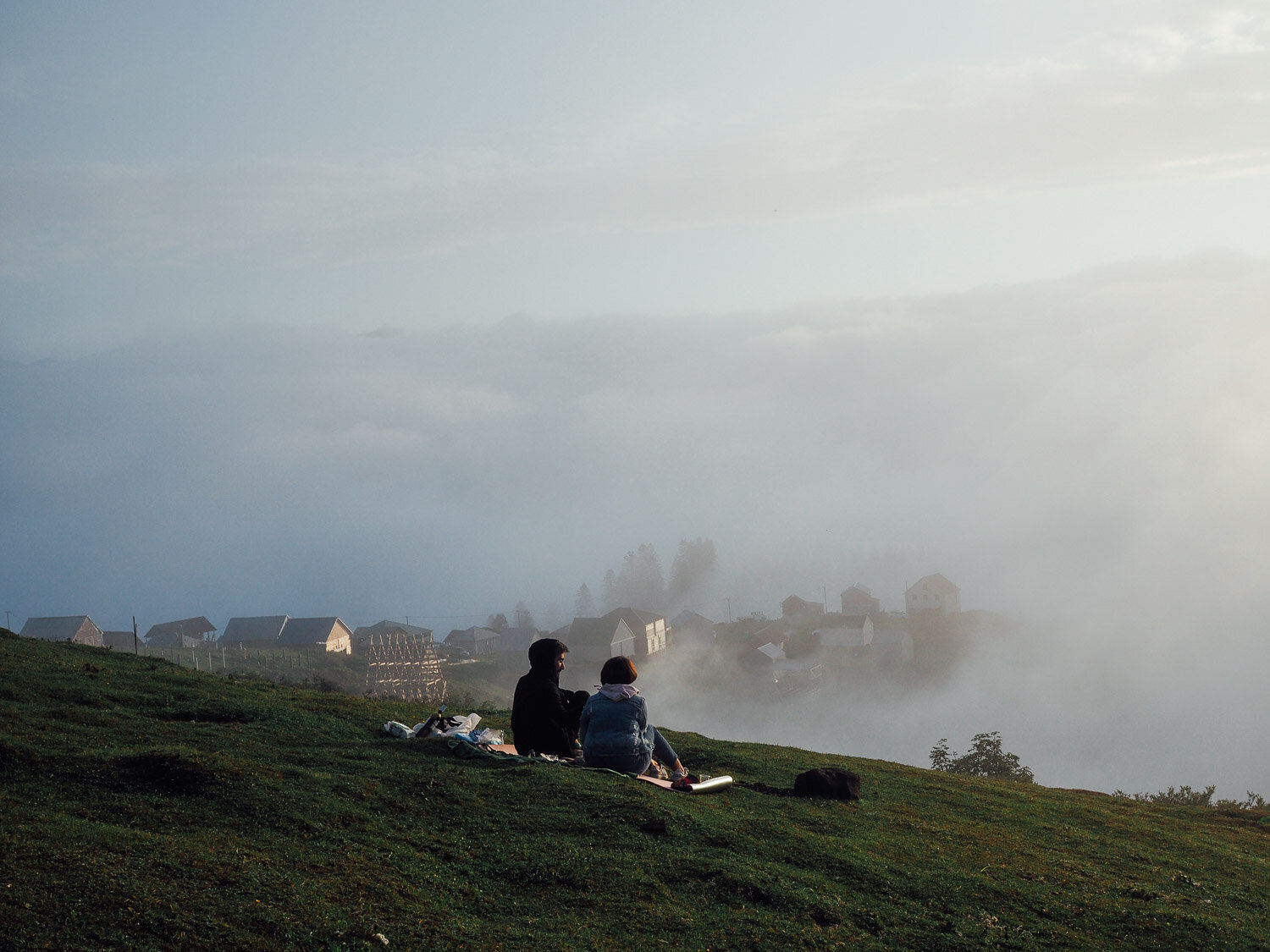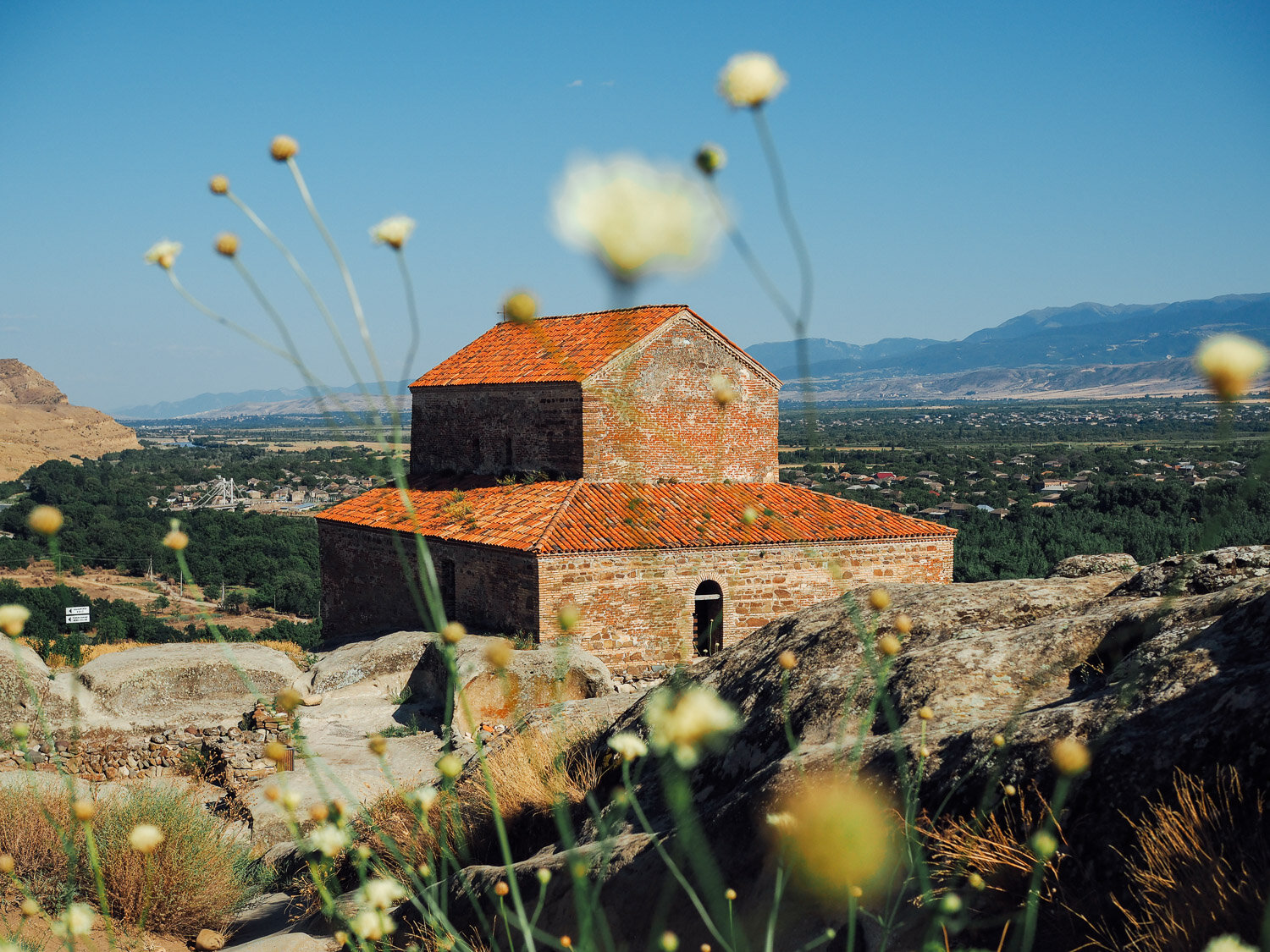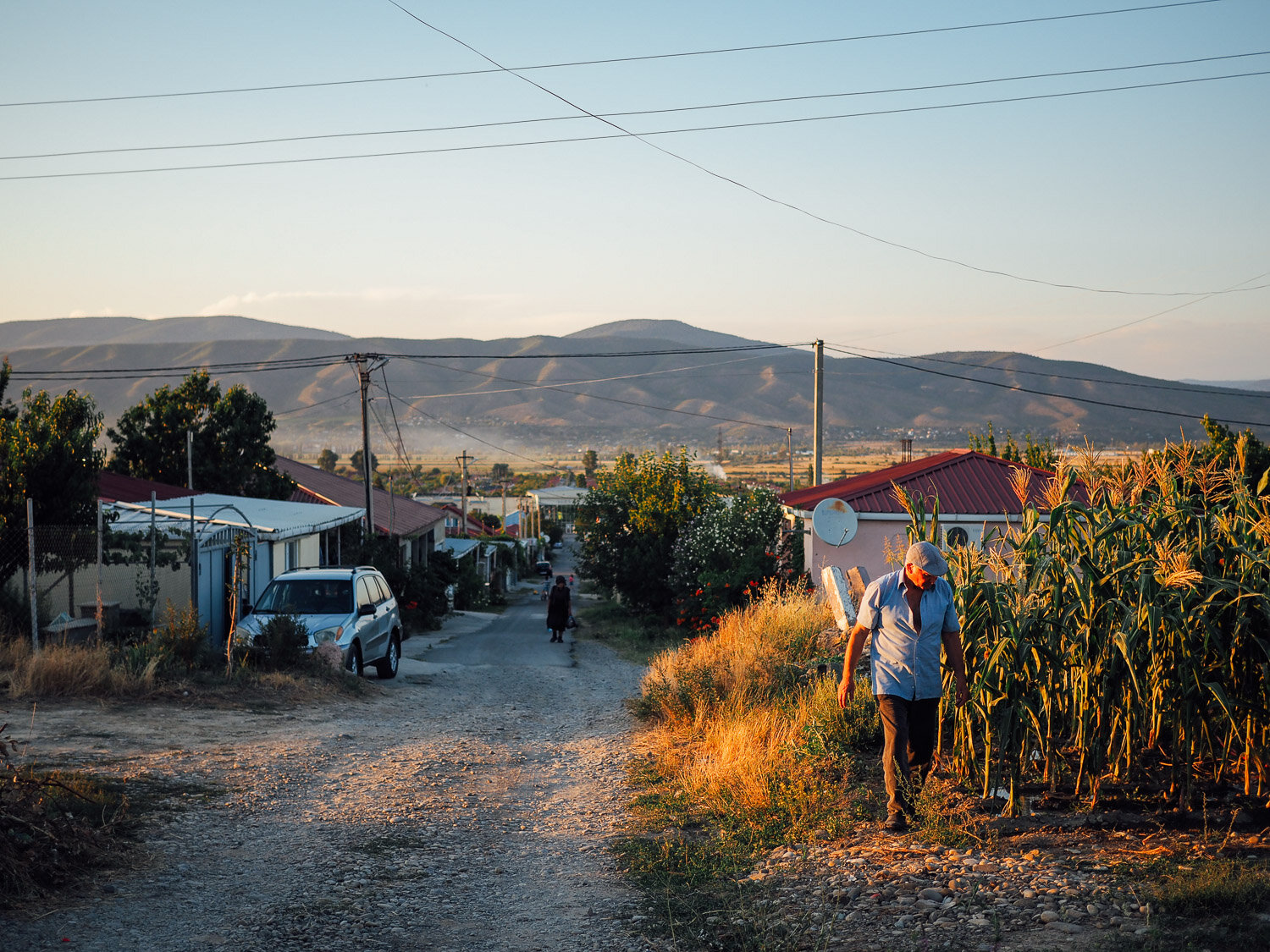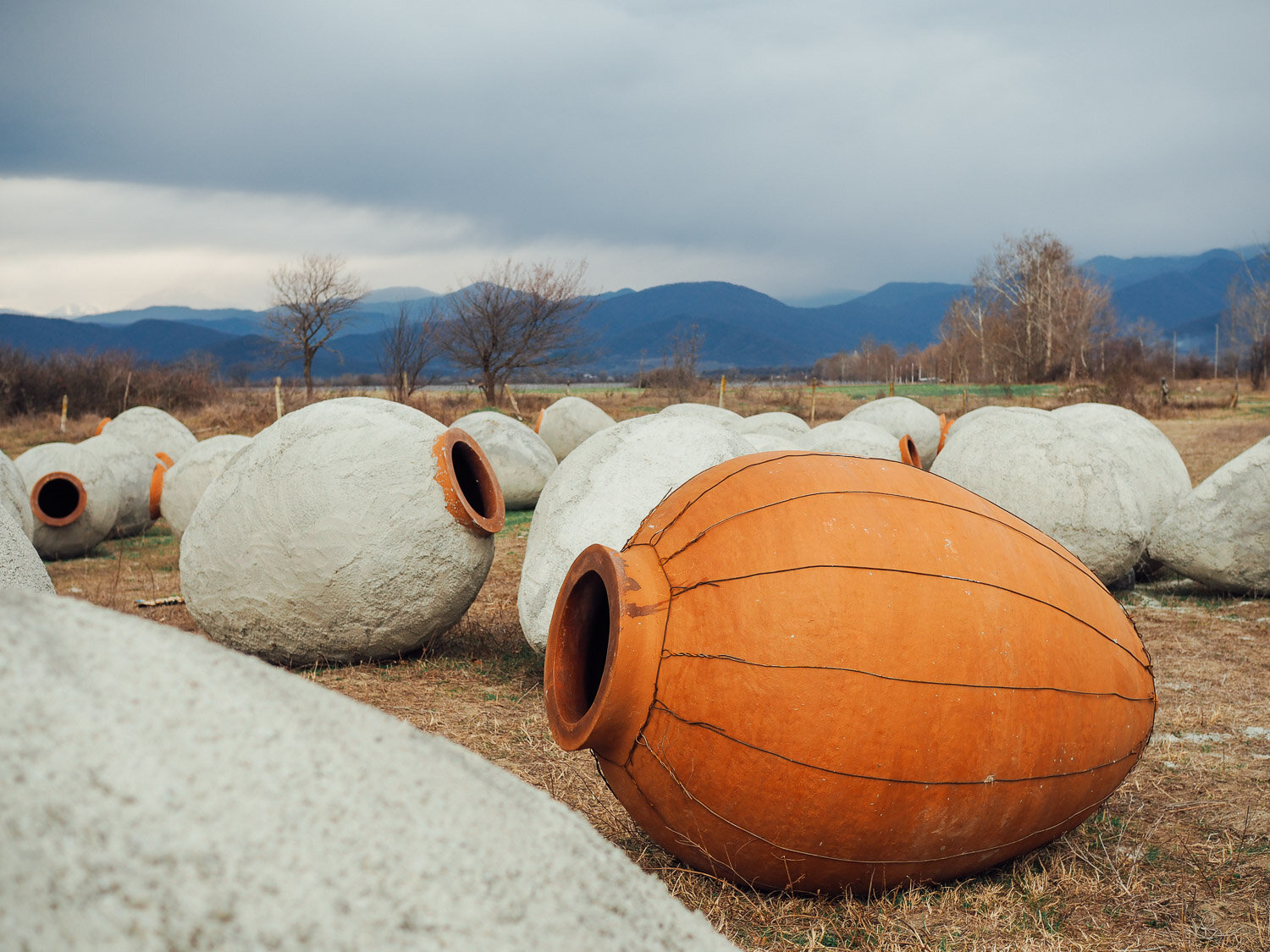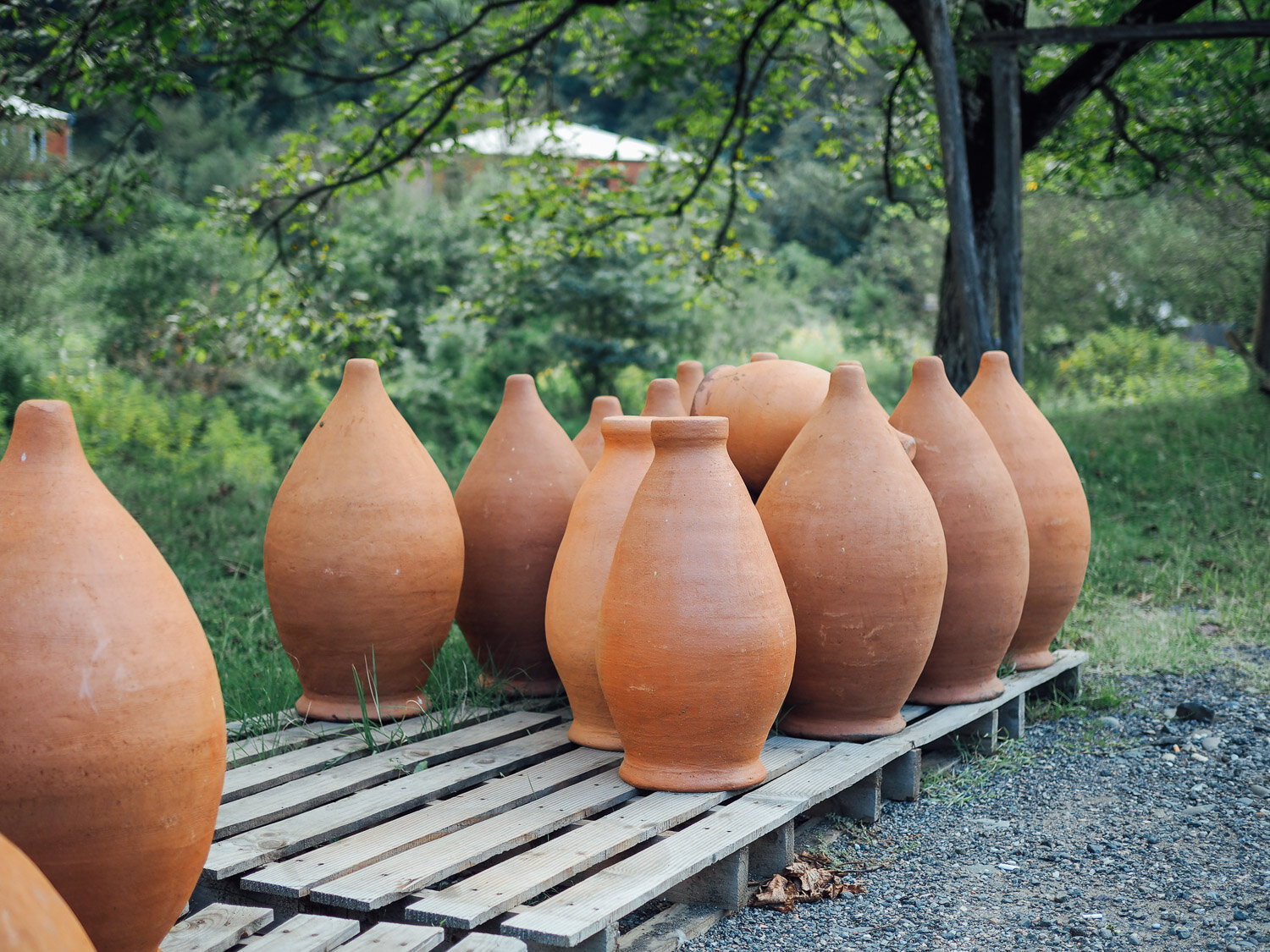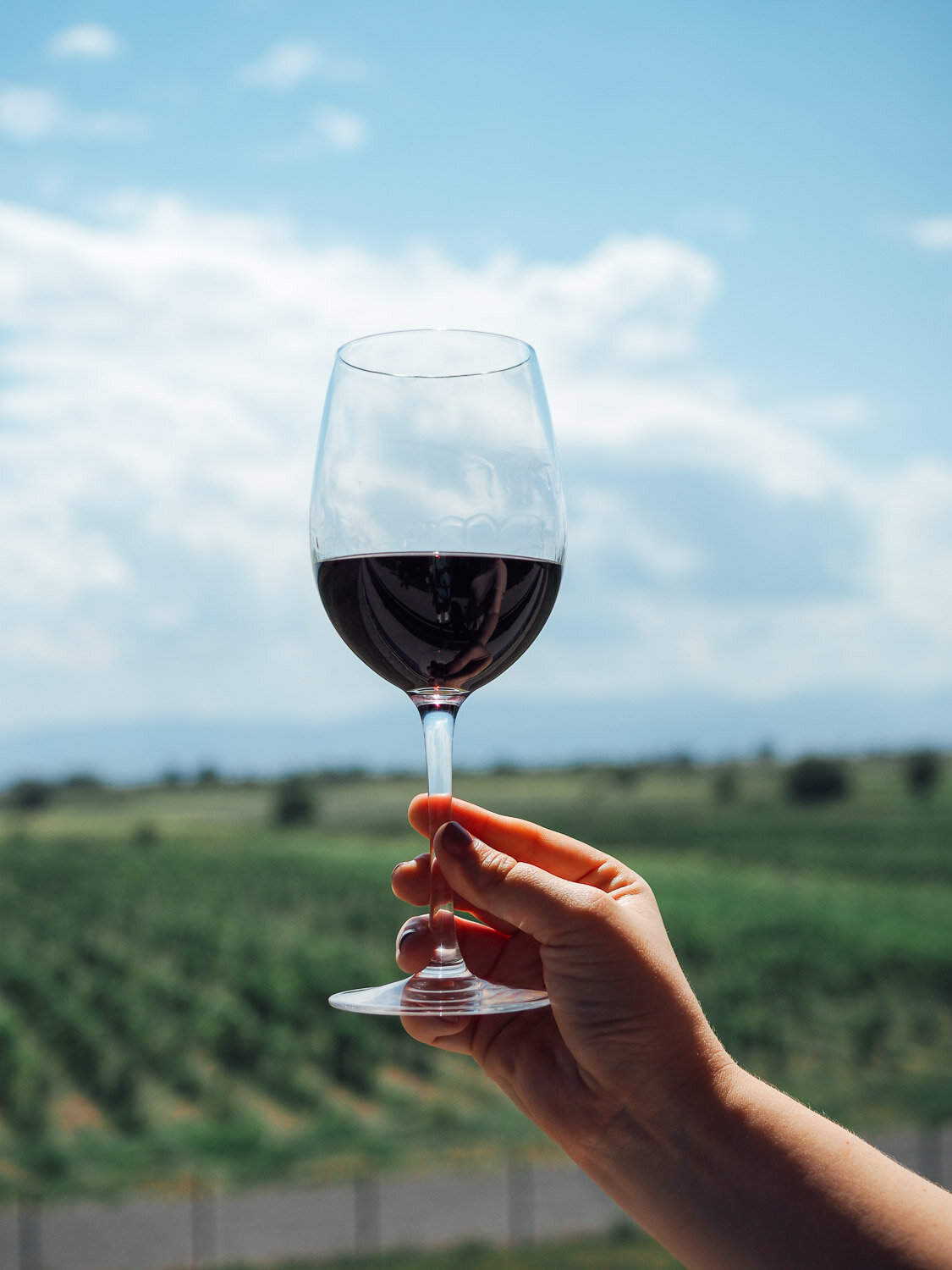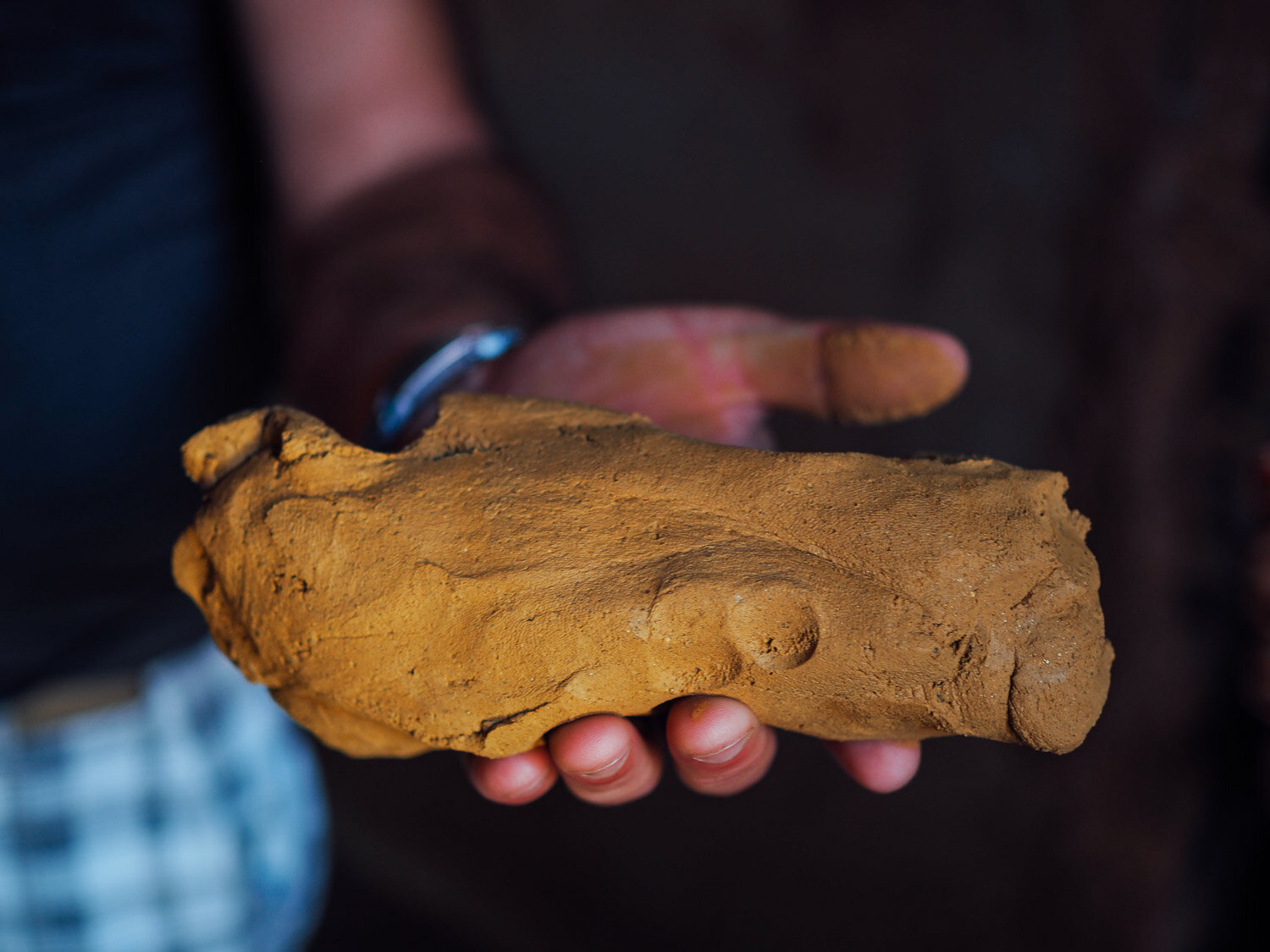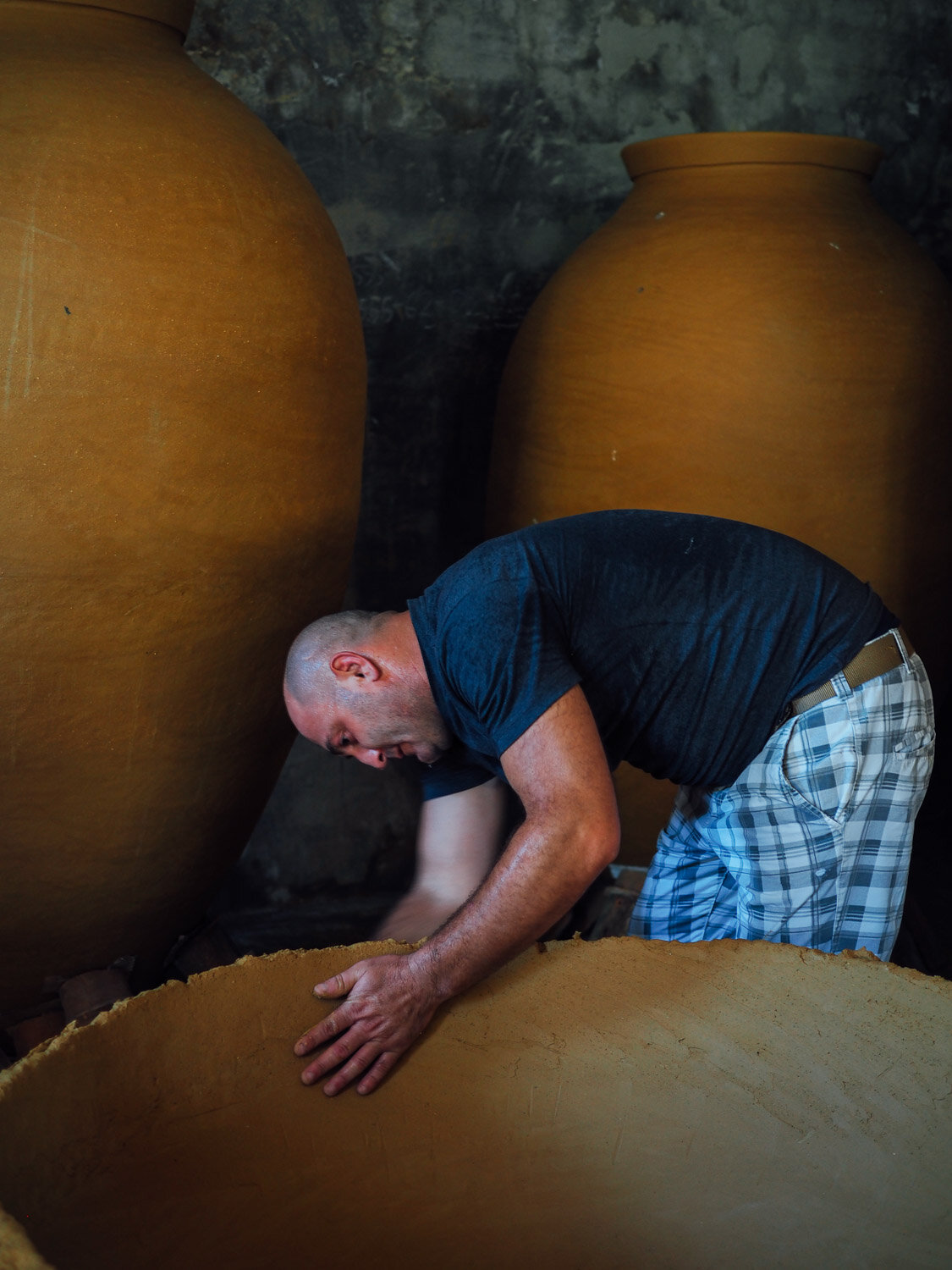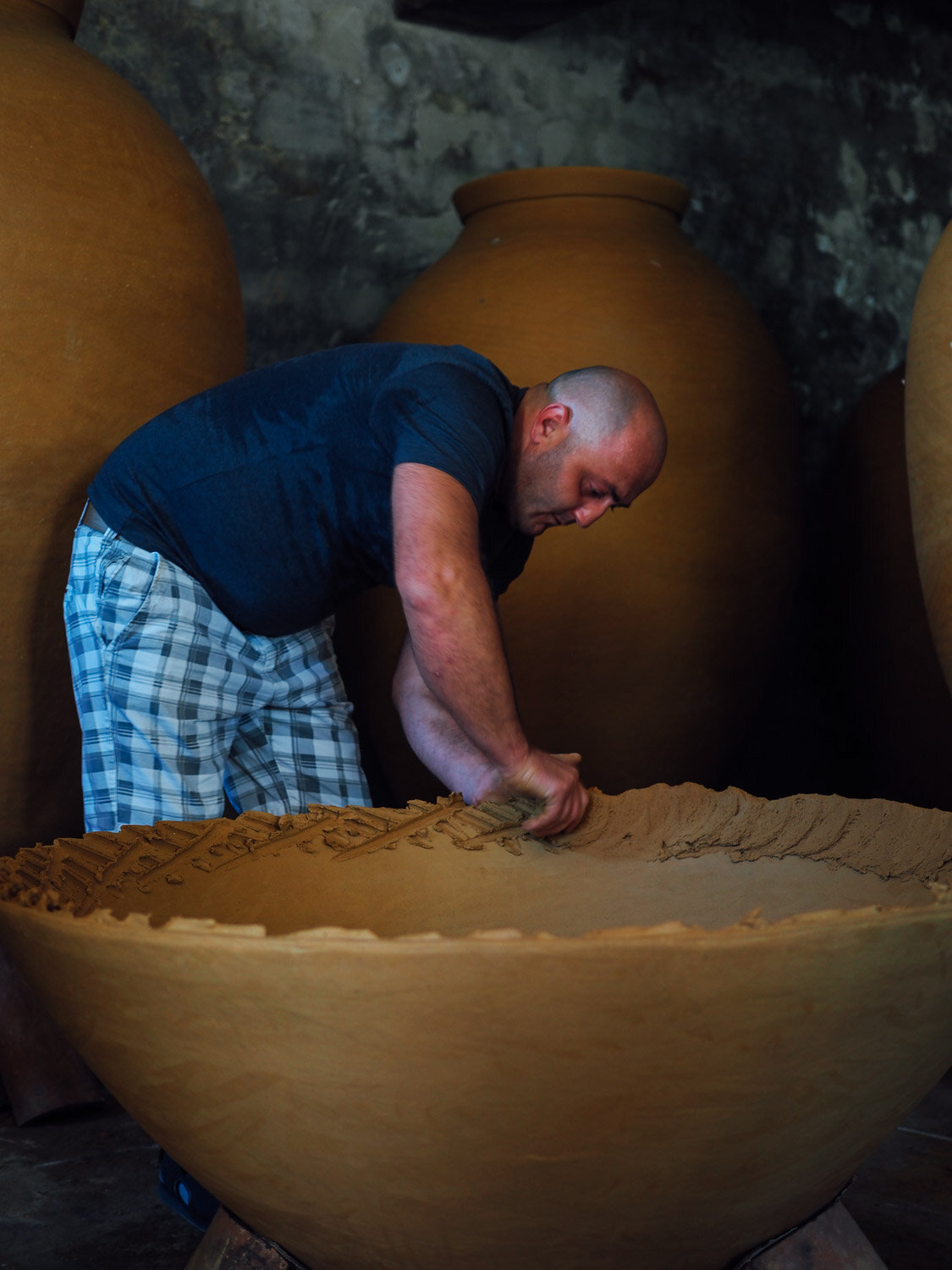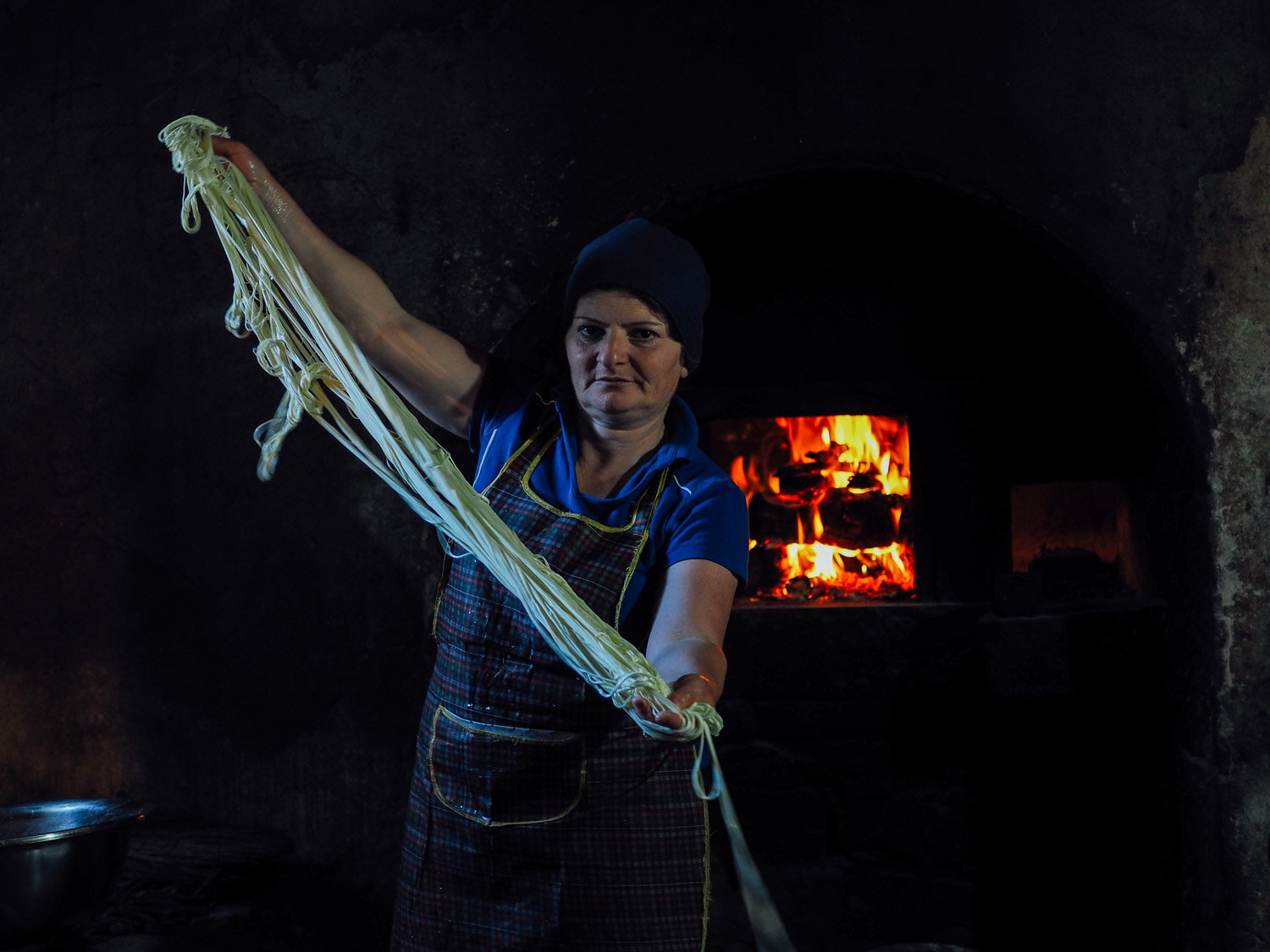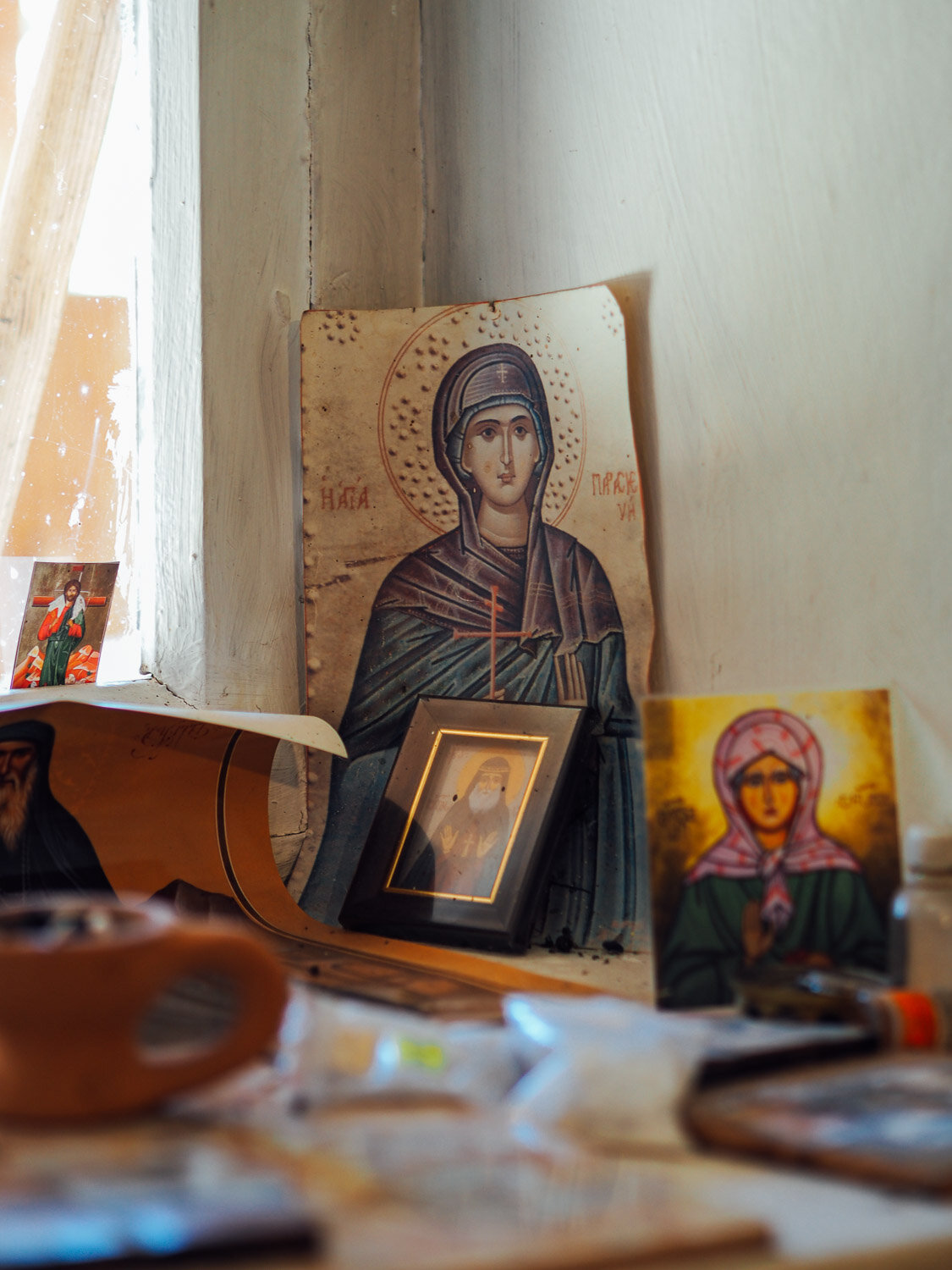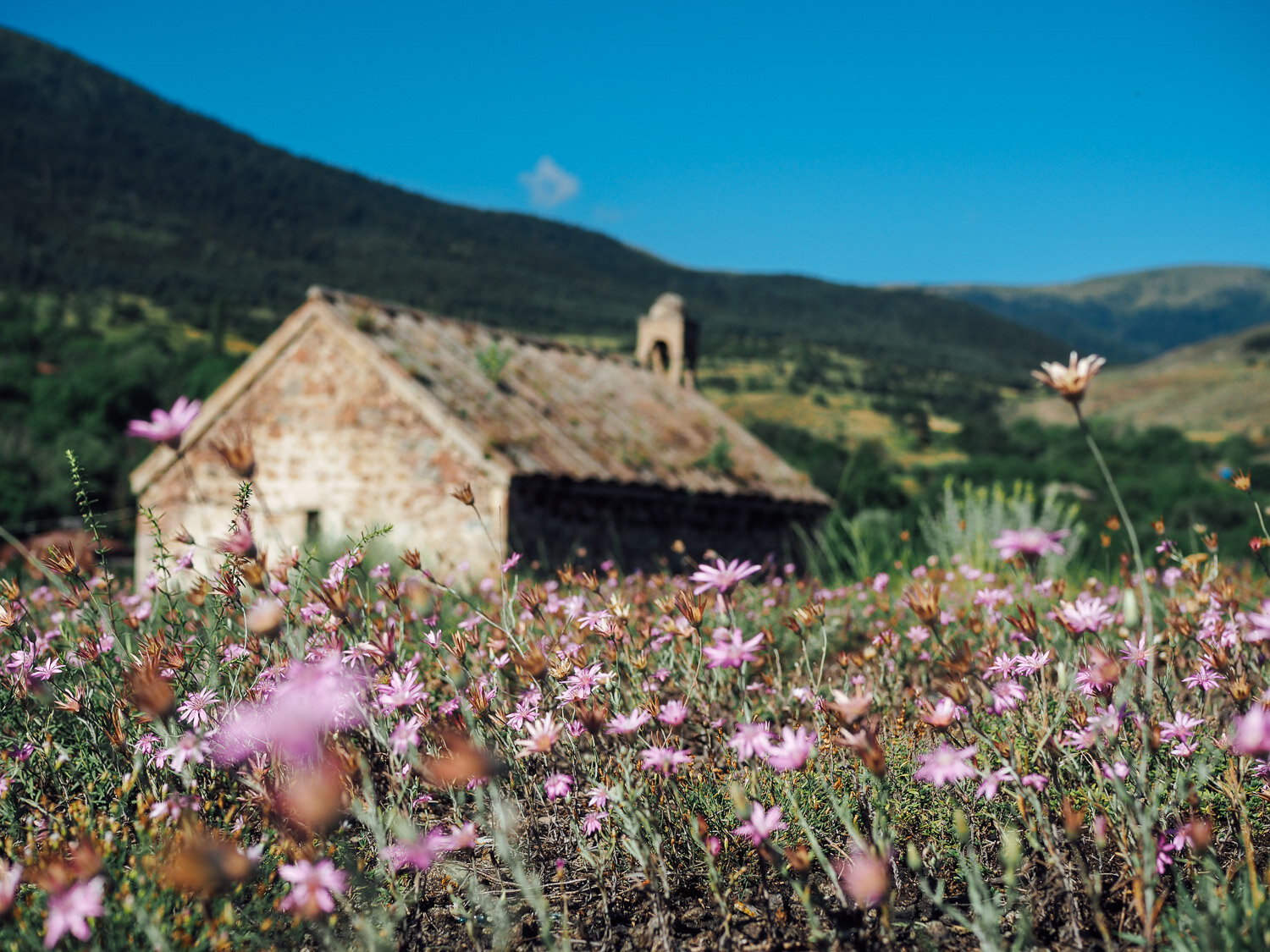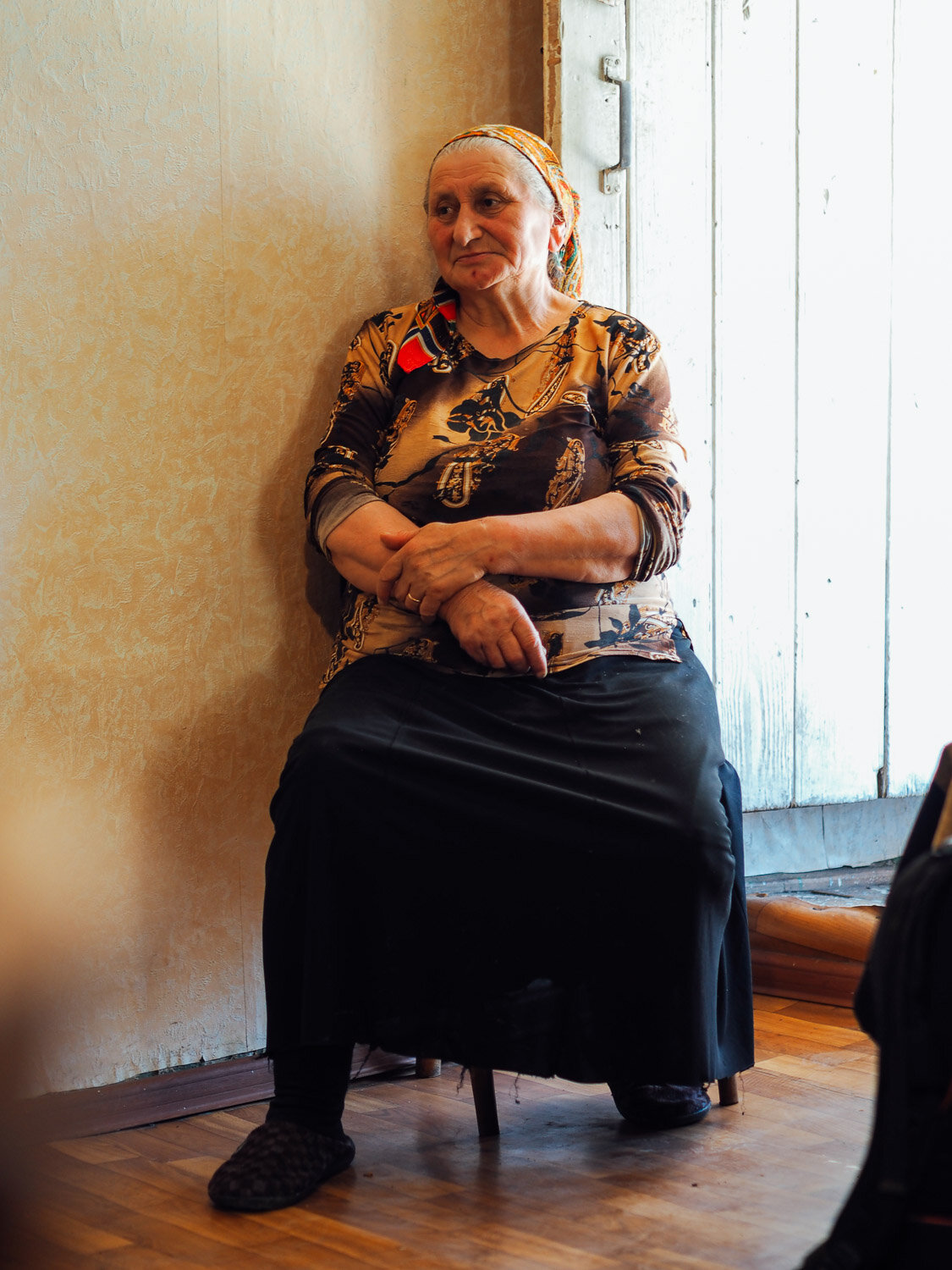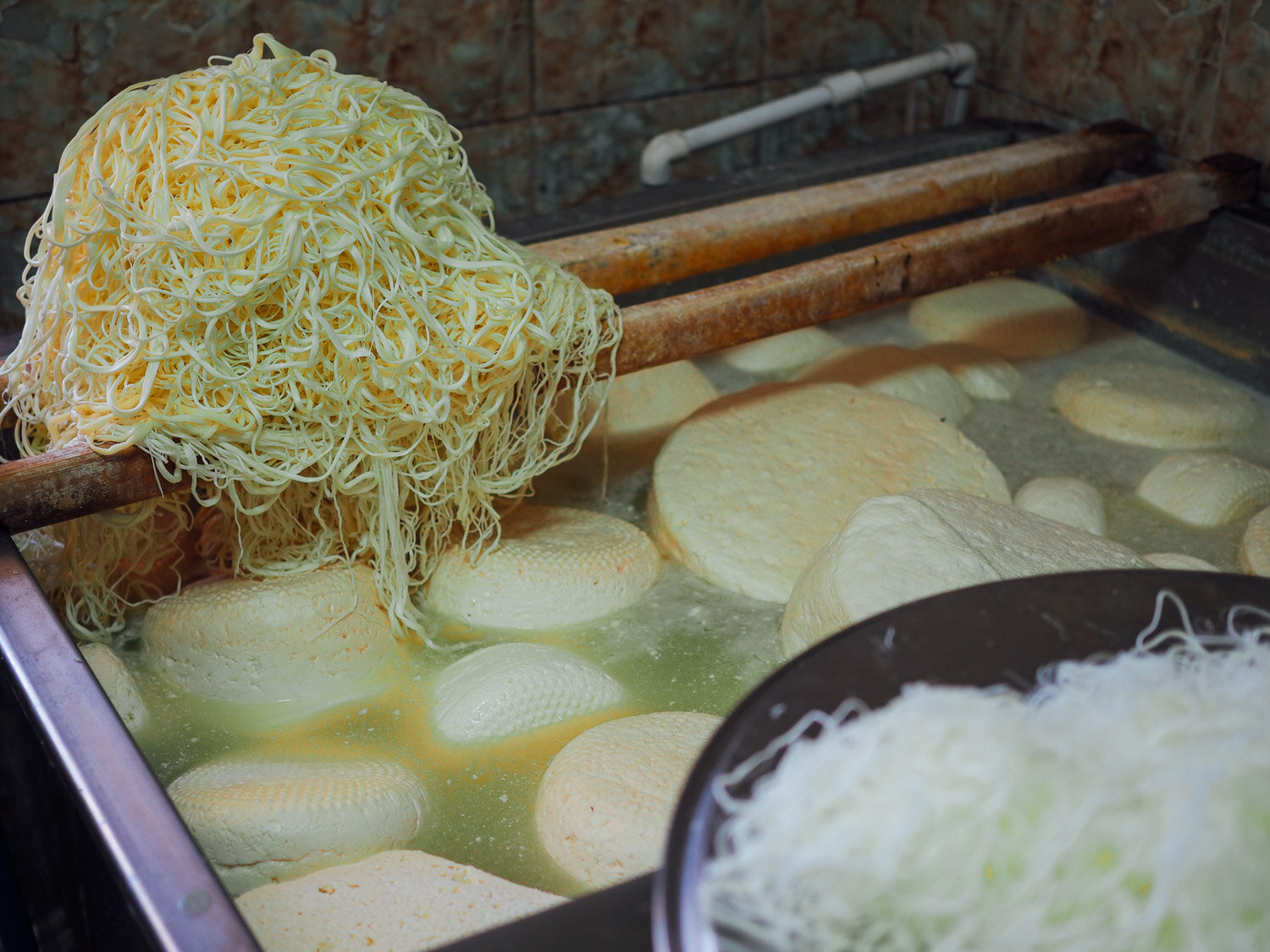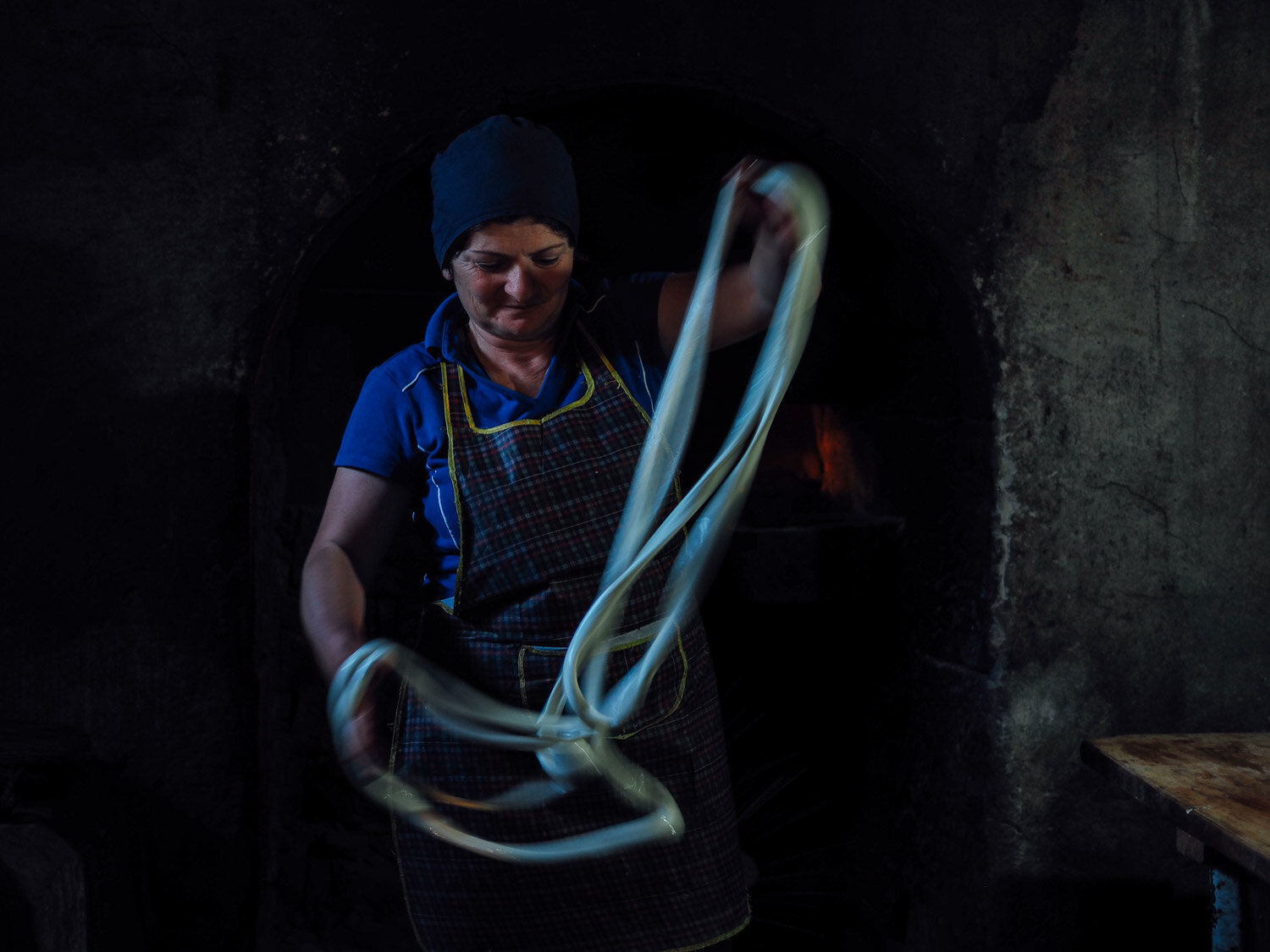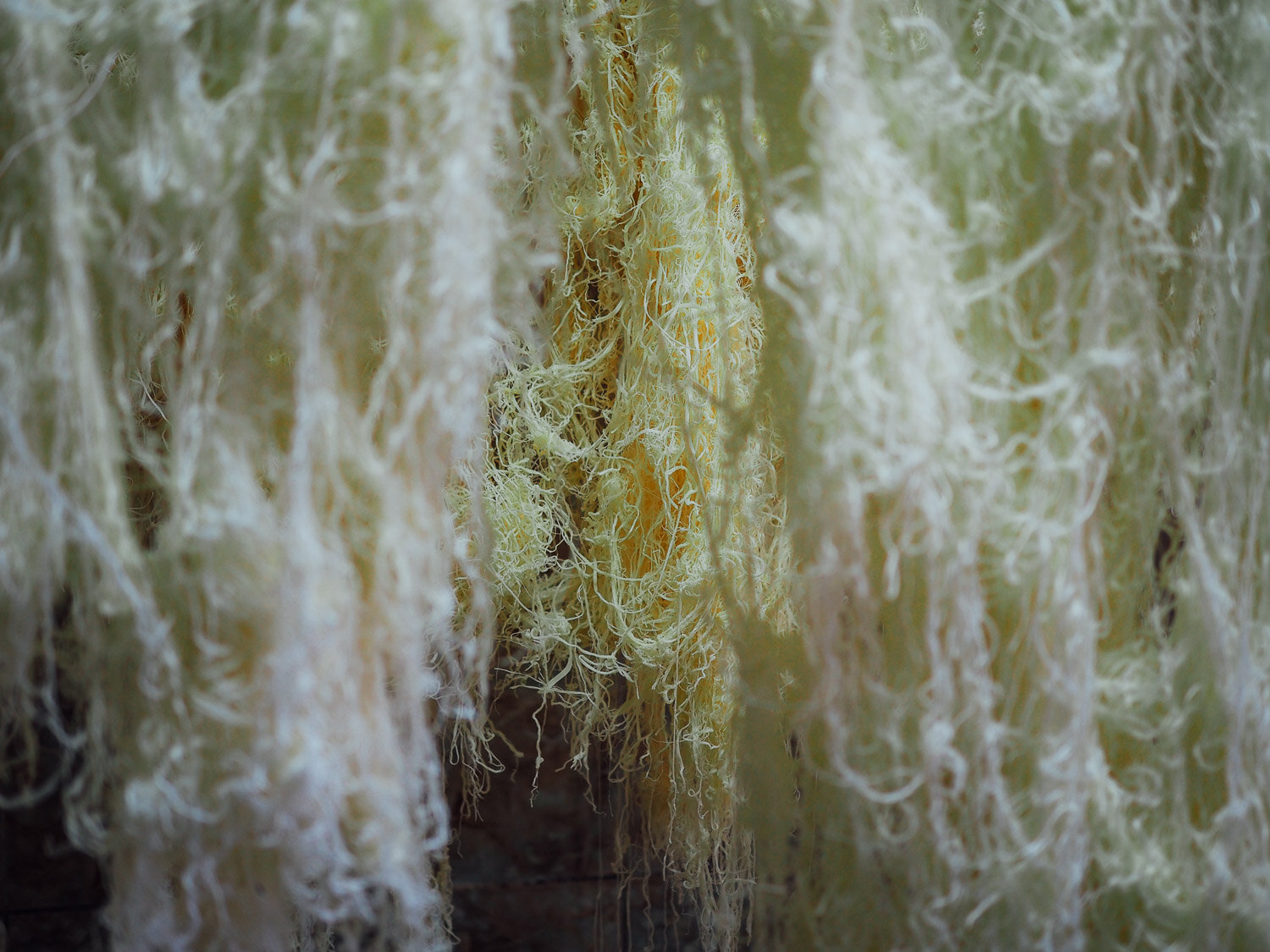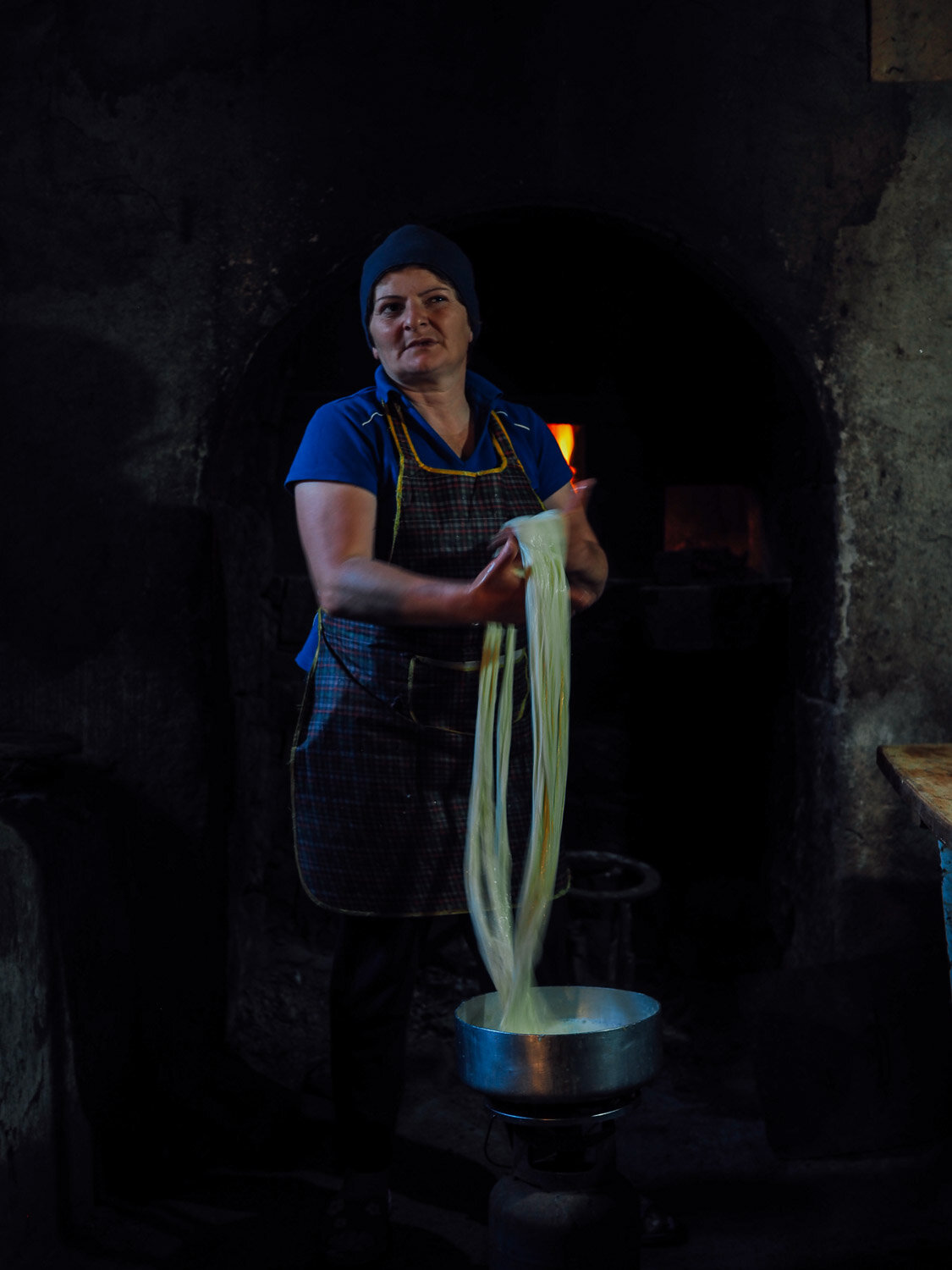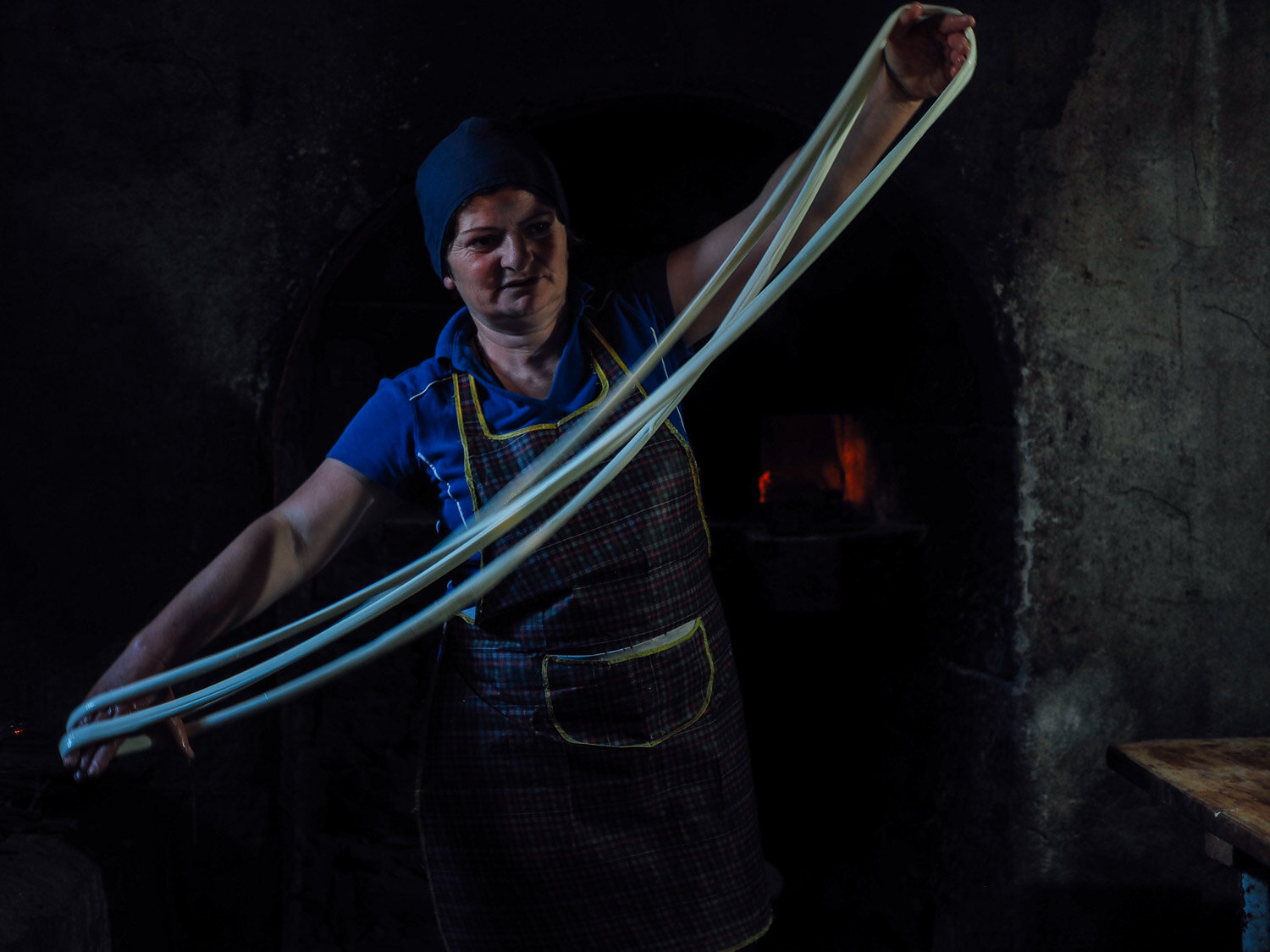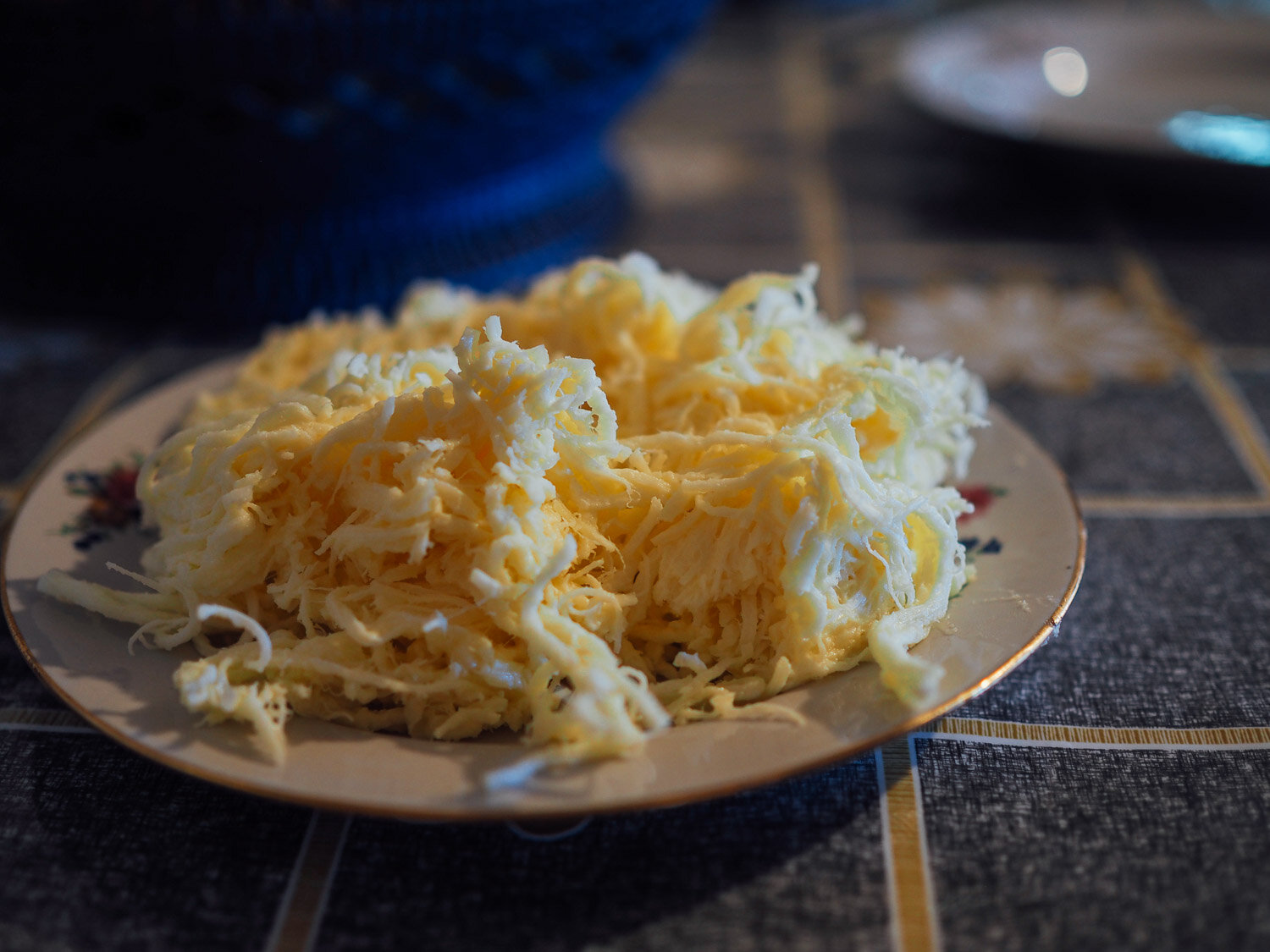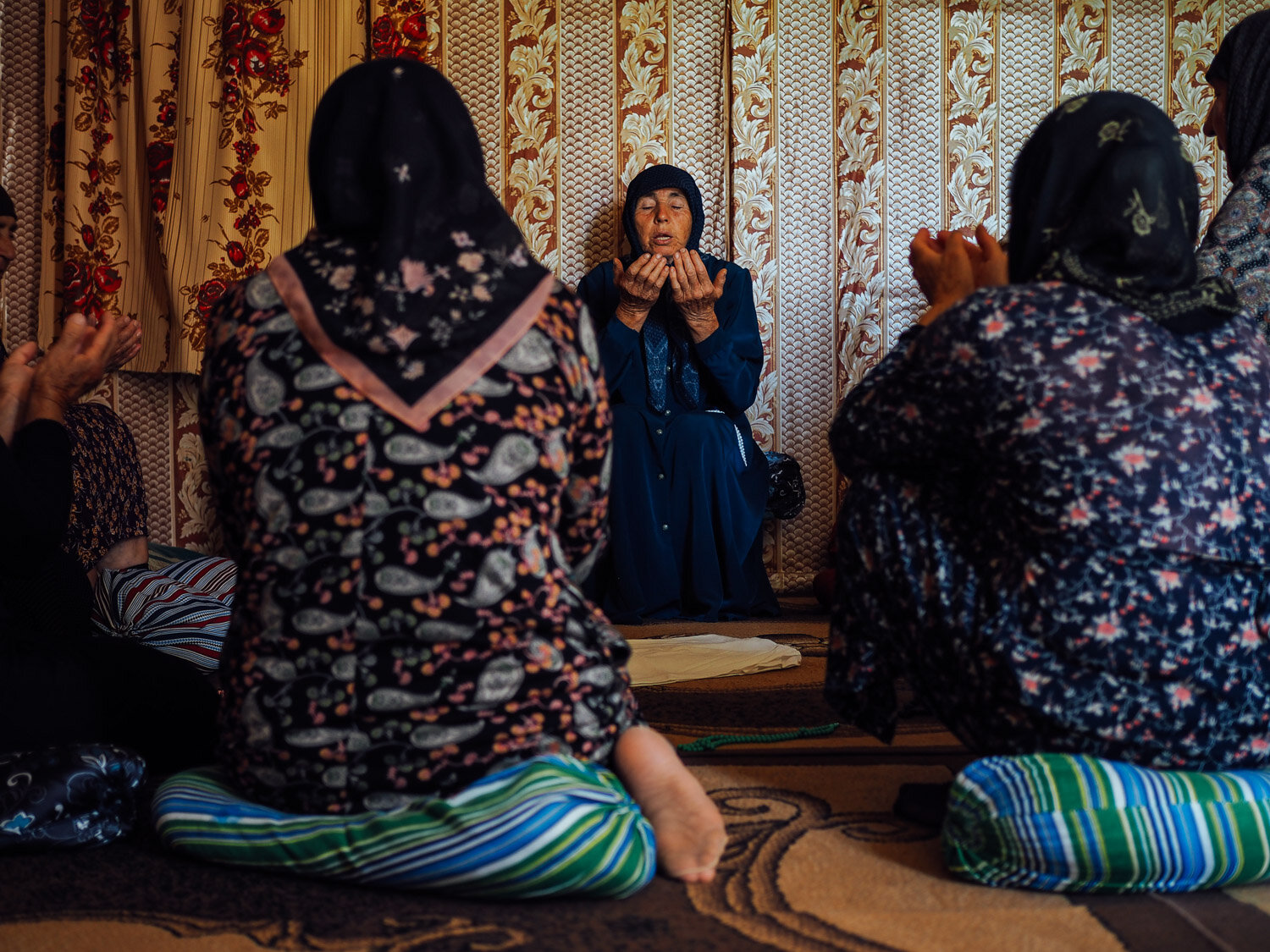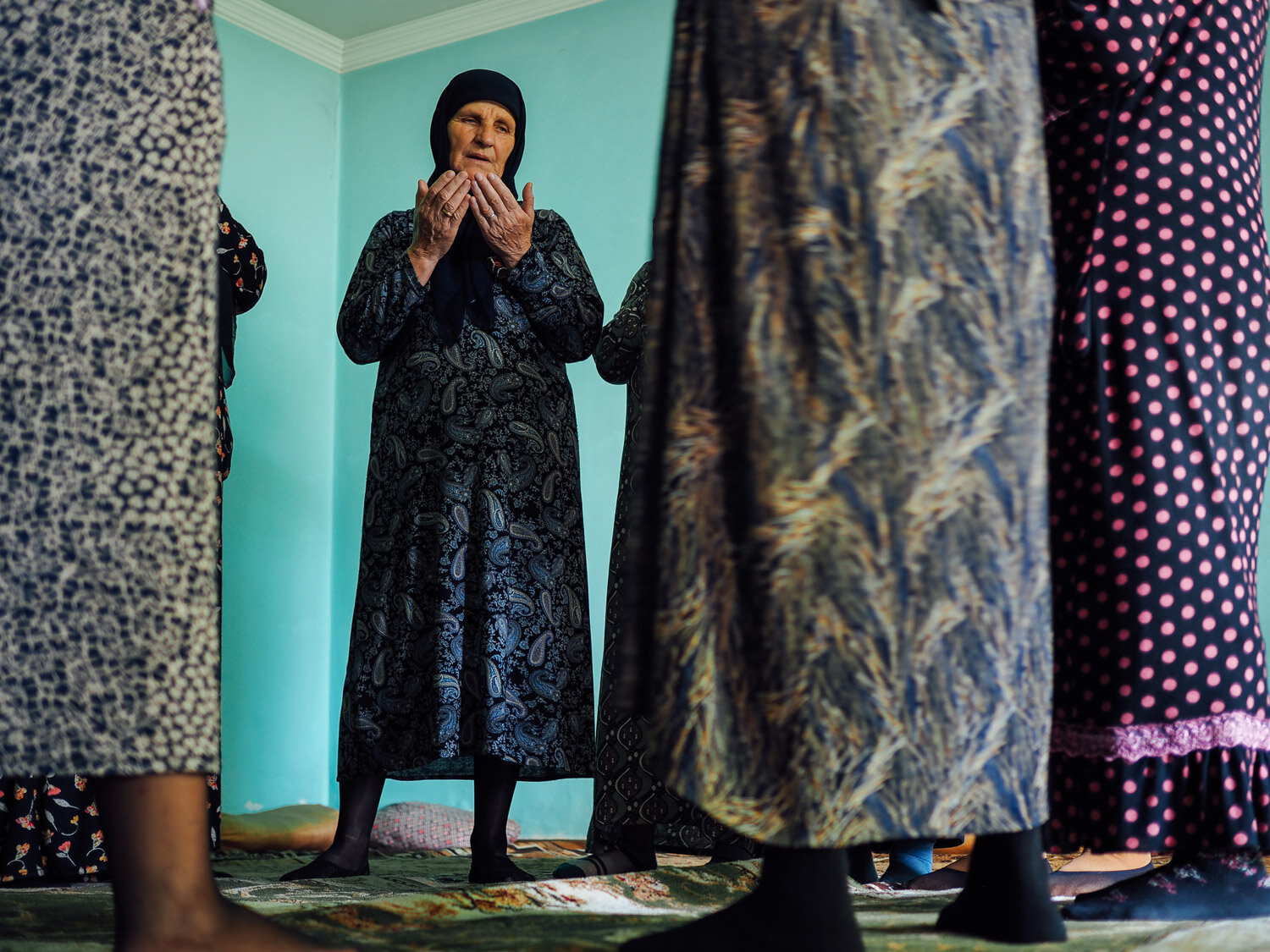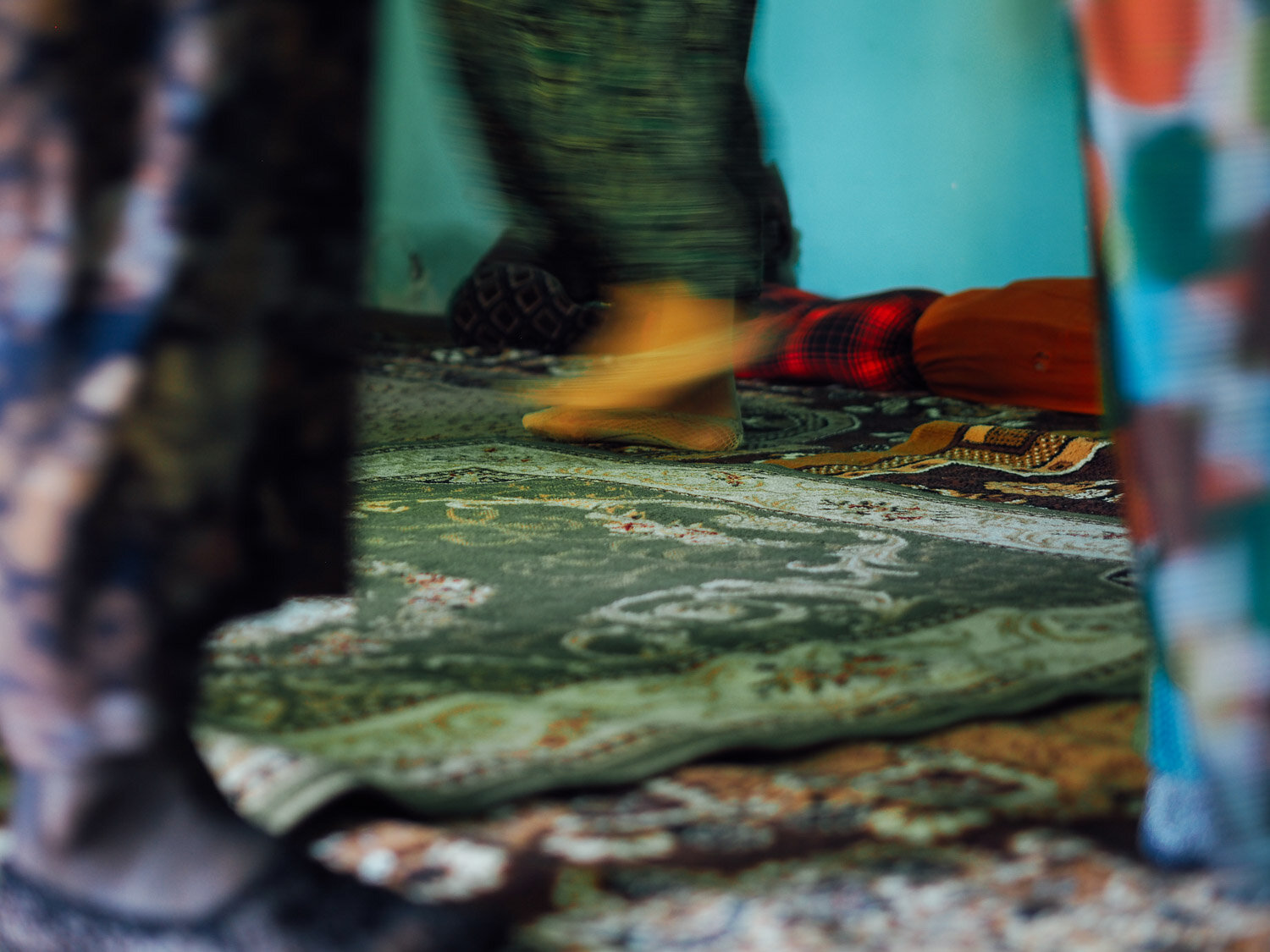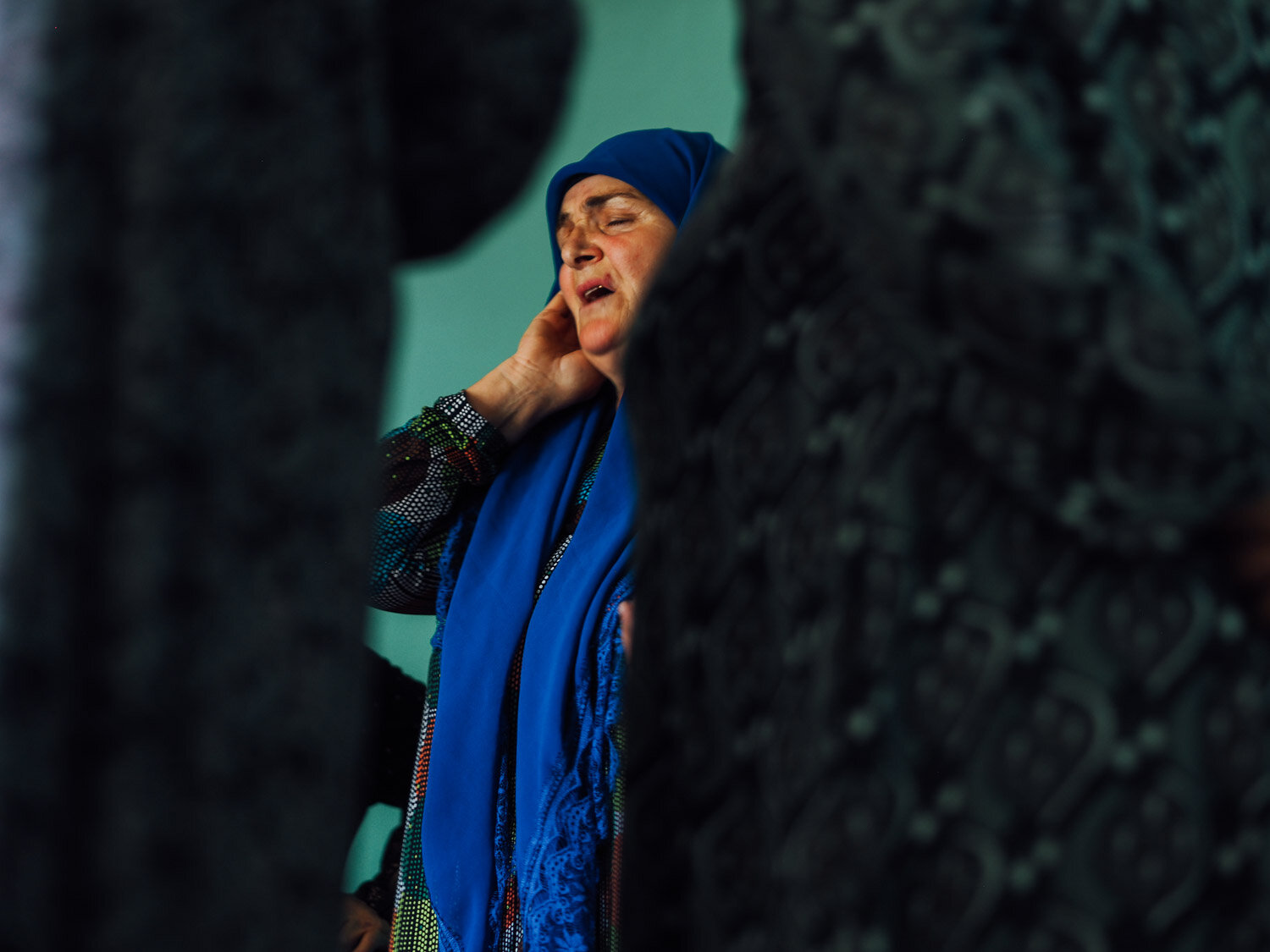SLOW TRAVEL in Georgia
GEORGIA ON OUR MINDS
SLOW travel IN georgia | storyteller & photographer emily lush | tour operator karavanly
while her home country border remained closed, Australian storyteller, Emily Lush was nicely positioned in one of the most ethnically and linguistically diverse places on earth. GEorgia!
taking advantage of the recent summer season Emily spent most of it slow travelling her way around local villages and countryside. she also joined Georgian travel hosts, Karavanly for a guided tour, meeting with fascinating folk and experiencing Authentic local life.
Rich with cultural diversity, including the world's oldest wine-making tradition, We've definitely got Georgia on our minds…
For the sixth time in as many days, I’m being ushered through someone’s garden into an underground wine cellar sunk beneath the family home. These subterranean Marani are always cool and quiet, the perfect salve for a hot summer’s day in the village in Georgia.
As my eyes adjust to the dim light, I see a long wooden table laid out with copious amounts of food and half a dozen jugs of wine… another day, another feast. The Supra, as it’s known, is one of Georgia’s most important traditions, and in a country where every guest is considered a gift from God, hospitality is something locals have down to a fine art.
A traditional Supra is laid out on Lurji Supra, blue and white tablecloths made specially for the occasion. Block-printed with ornaments, they conjure the meal ahead with their tiny table settings, fish and dancing buta shapes. (Pine cone-shaped design motifs, traditional to Persia and India). Eating is a social activity and meals are always served sharing-style in the centre of the table. Food is plentiful when there are guests in the house, and it’s never long before the plates are stacked three levels high with vibrant tomato and cucumber salads, pickles, fresh Shotis Puri bread, grilled meat, farm cheese and other goodies.
I relocated to Georgia before the pandemic and have been lucky enough to explore the length and breadth of this small country, but one summer, my eyes were opened to parts of Georgia I never knew existed. I travelled with Karavanly, a boutique tour company bent on bringing intimacy back into travel.
Karavanly work closely with local families and small businesses in Georgia, playing the role of conduit to help visitors access more authentic experiences by removing the obstacles one typically faces, namely transport logistics and the language barrier. The antithesis of a typical group tour, itineraries feature lesser-visited corners, culinary masterclasses, craft workshops, and every day a generous lunch of regional delicacies eaten in a different family’s home.
Joining a Supra in a family home is one of the most enjoyable parts of travelling in Georgia. Granted it’s not always a feast, sometimes a small gesture… a jar of honey or a bottle of Chacha pomace brandy… offered as a welcome to the guesthouse or village. The open-heartedness and generosity they share of their traditions with visitors to the region, speaks volumes about Georgian people. They hold onto their heritage and identity with much gusto!
For most of its history, Georgia has been under the thumb of some superpower, be it the Ottoman Empire, Imperial Russia or more recently, the Soviet Union.
Regaining independence in 1991, Georgians are eager to show off the magnificent culture they’ve been safeguarding in underground cellars, monastery cloisters and via tiny workshops, for generations.
As part of Transcaucasia (South Caucasus), one of the most ethnically and linguistically diverse places on earth, Georgia boasts one of the world’s oldest Orthodox Christian traditions. Not only a place with a unique language thats origin still baffles historians, or its rich history with the Arts: music; dance; polyphonic singing; folklore and artisan textiles. Through the ages of civilisation, Georgians are the responsible preservers and practitioners for keeping the world’s oldest winemaking tradition alive. A cultural pastime that now attracts visitors from far and wide.
The Cradle of Wine
If there’s one thing that draws people to Georgia, (aside from the hiking), it’s the wine. Deep red Saperavi and lustrous bronze ‘amber’ wines are the lifeblood of this nation, the living roots of an 8000-year-strong winemaking tradition. Georgian vintners ferment grapes much the same way their ancestors did, using rotund clay amphorae called Qvevri which, when buried deep in the earth, provide the ideal conditions for fermentation.
Georgia’s climate is perfect for cultivating grapes; incredibly, more than 500 varieties are indigenous to the territory. During the Soviet period, a select few ‘hardy’ species were singled out for mass production. It’s fallen on today’s winemakers to re-cultivate endangered vines, often using a single shoot that survived in someone’s backyard.
Qvevri traditions are tantamount to Georgian culture in its purest form: Wine is interwoven into almost every chapter of history and every facet of modern life.
It’s a huge privilege to be able to walk into a cellar (or Marani) that’s been in the same family for generations. The experience usually begins with a demonstration of how the Qvevri are tended with special tools, and always ends with much drinking and toasting.
Qvevri Traditions
Good wine begins with a good Qvevri. There are only a handful of families who still produce the clay vessels the old fashioned way, including the Bozhadzes in the village of Shrosha in Western Georgia. Sergo, a fifth-generation Qvevri builder, and his father, clay master Zaliko, are known for building some of the finest amphorae in the country.
As I enter their home-workshop on a hot afternoon, a primordial smell of dark, wet earth greets me. Someone grabs a handful of supple clay from a mound in the corner and works it into a thin sausage, while Sergo unveils a half-built Qvevri, its rounded base propped up with roof tiles. The lip of the vessel, still soft from yesterday’s session, is scored before a fresh layer of clay is added.
This is how the impossibly huge Qvevri is built: Piece by piece, coil-pottery style, 10 centimetres at a time and over a period of weeks or even months. The average Qvevri is capable of holding 1,000 litres of wine when finished and is big enough for an adult to climb inside – in fact, this is precisely how a winemaker cleans his Qvevri every spring, by jumping in and scrubbing it by hand.
Once complete, the vessel is transferred to a kiln the size of a small apartment to be fire roasted. Finished with a maker’s mark and dipped in limestone, the finished product is so beautiful, it almost seems a shame to sink it in the earth where no one will be able to behold Sergo’s handiwork. This is where the real work begins: This Qvevri has
a lifetime of fermenting grapes ahead of it.
The Lost Cheese
Of all the Georgian food traditions cheese occupies a special place in culture and consciousness. The country is sometimes referred to as the ‘home of cheese’, a reference to the 250-odd documented varieties of specialty and rare cheeses made from sheep, cow or goat milk. These range from Dambalkhacho, a sort of blue cheese from Mtskheta-Mtianeti region, to Guda, an aged cheese found in the remote mountains of Tusheti.
In the tiny village of Andriatsminda, I observed one of Georgia’s more unusual cheese-making techniques. Tenili is a ‘pulled cheese’ made by heating cow milk curds then hand-pulling them to form long strings. Huddled around a fireplace in a small room with the walls and ceiling blackened by layers of ash, I watched as the hot curds are expertly drawn into angel hair-thin threads. Later, I tried this slightly salty cheese piled on top of a piece of bread.
Galina Inasaridze is the matriarch of the family and is clearly in charge of the cheese-making enterprise. She learned the art of Tenili from her grandmother and now employs women from the local community to produce the cheese on a commercial scale.
Artisanal cheesemaking, much like small-scale Qvevri winemaking, had no place in the Soviet economy and was forced underground. Without women like Galina, the knowledge required to make Tenili might have disappeared completely, taking an important chapter of Georgia’s culinary history with it.
Today there’s a growing demand for artisanal food products like Tenili from chefs in Georgia’s capital city, Tbilisi. This is helping to sustain the tradition for the next generation and to create jobs for women in remote villages like this one.
Voice of the Mountains
Despite being located between two of Georgia’s most popular destinations, Kakheti wine region and the Greater Caucasus mountains, very few people make it to Pankisi Valley. The majority of the families in this area are Kists, who are the descendents of Chechen migrants who arrived in Georgia 200 years ago.
Every community in Georgia has its own music and vocal traditions, and Pankisi is no different. Here, many traditions are tied to Islam, and there are two active Sufi sects in the valley.
Zikr is a special ceremony used to achieve unity with Allah by repeating chants interwoven with poetry and song. Pankisi is the only place in the South Caucasus where women perform Zikr at the mosque as men do, and anyone who happens to be visiting the area on a Friday is welcome to sit in on the gathering.
As I joined the dozen women seated cross-legged on pillows around the edges of the room, all eyes fall on Markha Machalikashvili, the group’s leader. Markha is a member of Aznash Laaman (‘Voice of the Mountains’), an ensemble of female musicians and vocalists from Pankisi that have performed at festivals in Europe and Australia. The group was created in the 1990s to spread a message of peace and counter negative stereotypes around Pankisi. Many of their songs are inspired by Sufi hymns performed during the Zikr.
The clock ticks midday and Markha gives a small nod. It’s time to begin. The women form a small circle in the centre of the room. With one hand raised to her ear, Markha’s deep, throaty chant fills the entire space instantly, then a cacophony of sound explodes as everyone joins in.
Performed in Chechen language, the Nazms, Sufi hymns, are prayers for eternal life, prosperity and good health. The meaning of the words is indecipherable to me, but the sentiment is easy to comprehend.
Now standing with palms raised and eyes downturned, the women start to move in a circle, stamping their stockinged feet on the carpeted floor and clapping their hands. As the chants grow faster and faster, they move at an ever-increasing pace. Exhaustion is the end goal:
The Zikr is a purification ritual.
As the last hymn fades out, silence creeps back in and I’m left to ponder the beauty in the very fact that there’s still space in this modern world for a ritual like this to be performed. That a community typically left out of mainstream tourism creates a welcome space and generosity of spirit to share their most intimate of rituals, which says so much about this community.
As I traverse Georgia’s diverse landscapes and cultural frontiers, there’s one constant: Everyone welcomes me with an open heart and an open mind. As the world starts to open back up and more of us look for deeper, more sincere pathways back into travel, Georgia finds itself in a unique position.
Like every country that relies on tourism, Georgia is now on the precipice of change. As the industry rebuilds, it’s my hope that initiatives in small-scale, for-purpose tourism that benefit rural communities and highlight diversity will thrive.
This kind of travel can be mutually beneficial, a way for local cultures to evolve and endure in the hearts and minds (and on the tongues and fingertips) of those who are lucky enough to experience this little country in the South Caucasus.
wander-lush.org | Instagram | facebook | youtube
SHIBUI & Co. would like to thank Emily Lush for sharing her cultural discoveries while living in Georgia in 2021. (For more about Emily, please click to read her interview with us in 2020.)


